Strung Out Maps!

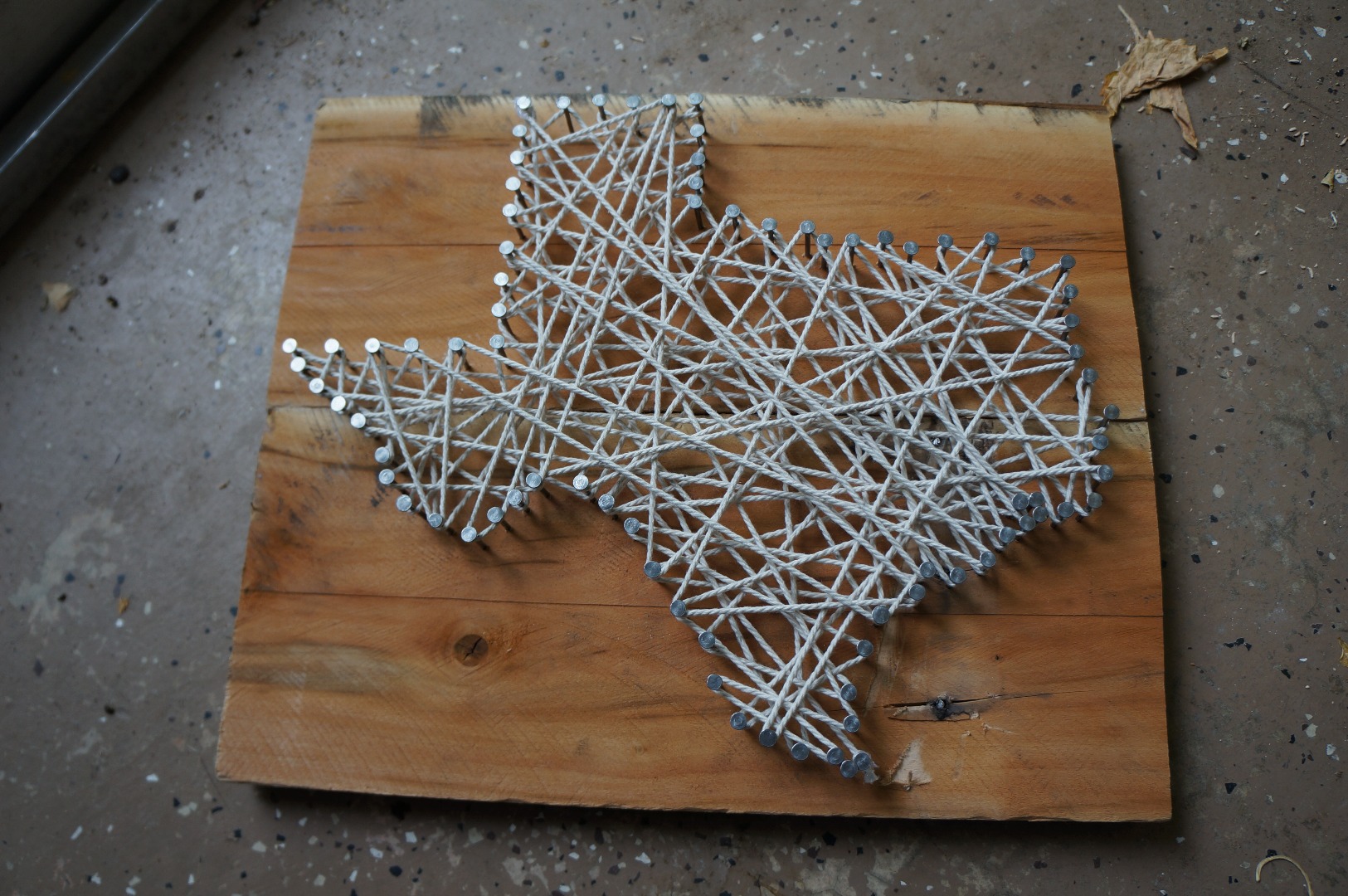
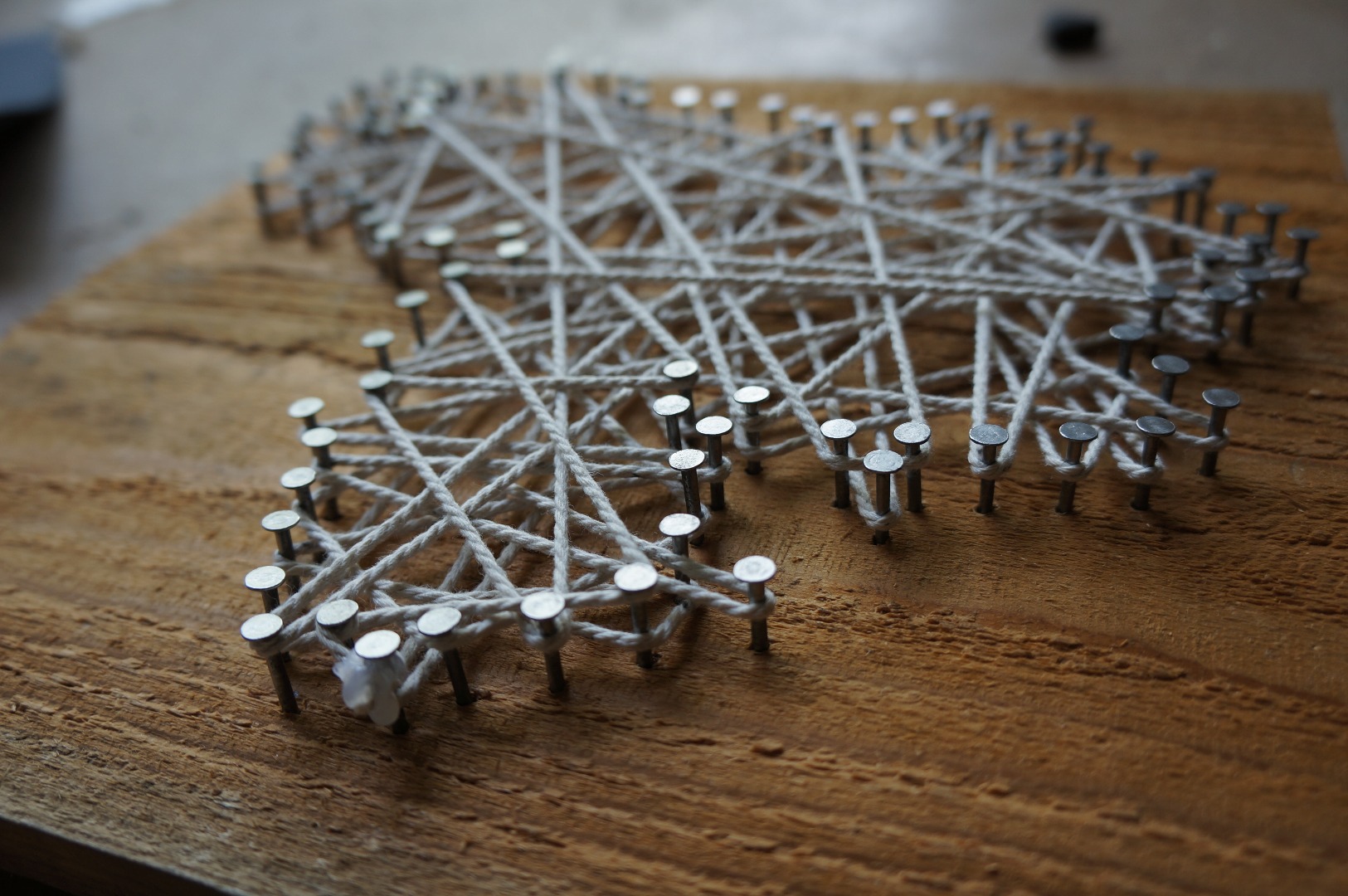
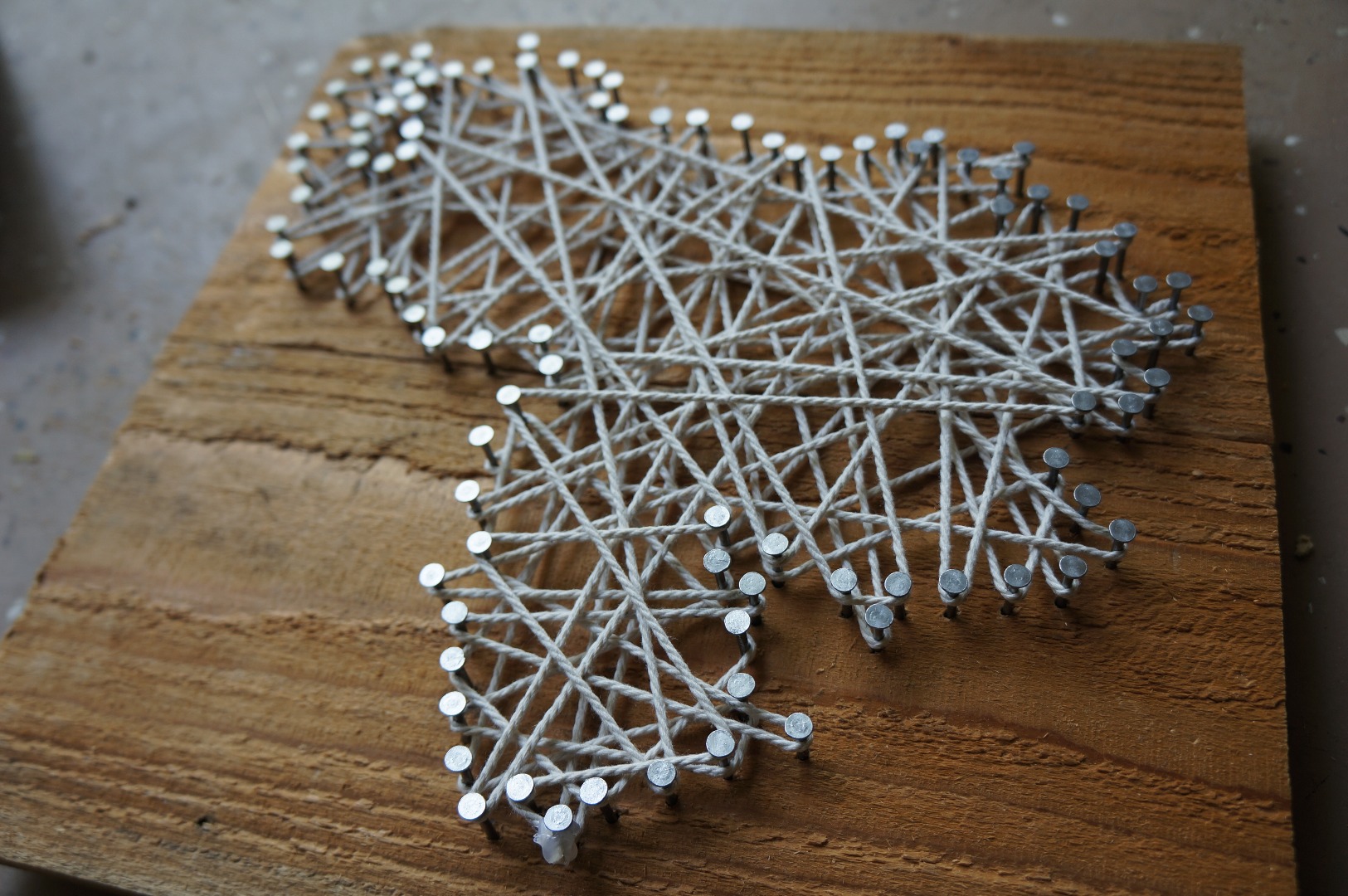
Maps are the best. Combine them with some tools and a bit of software and you've got a winning combination of weekend fun. I've seen many cool examples of string art on Pinterest, Etsy, etc. and have been wanting to give it a shot.
It was a rainy day, I had a huge stock of scrap wood, and I needed some unique gifts for a couple people so I finally decided to try my hand at some of these. I'm very pleased with the result, and it was surprisingly easy.
DISCLAIMER: There are endless possibilities for modification of these pieces (different shapes, materials, sizes, etc.), which makes them hard to define explicitly. To combat this I have done my best to present certain steps as a set of general guidelines, which you can follow using your own unique design.
I will also be upfront and say that this will not cover how to make the base. With the multitude of things you can use it fits in the category described above. Instead I'll focus on prepping the material you select.
Let's get started!
Tools & Materials
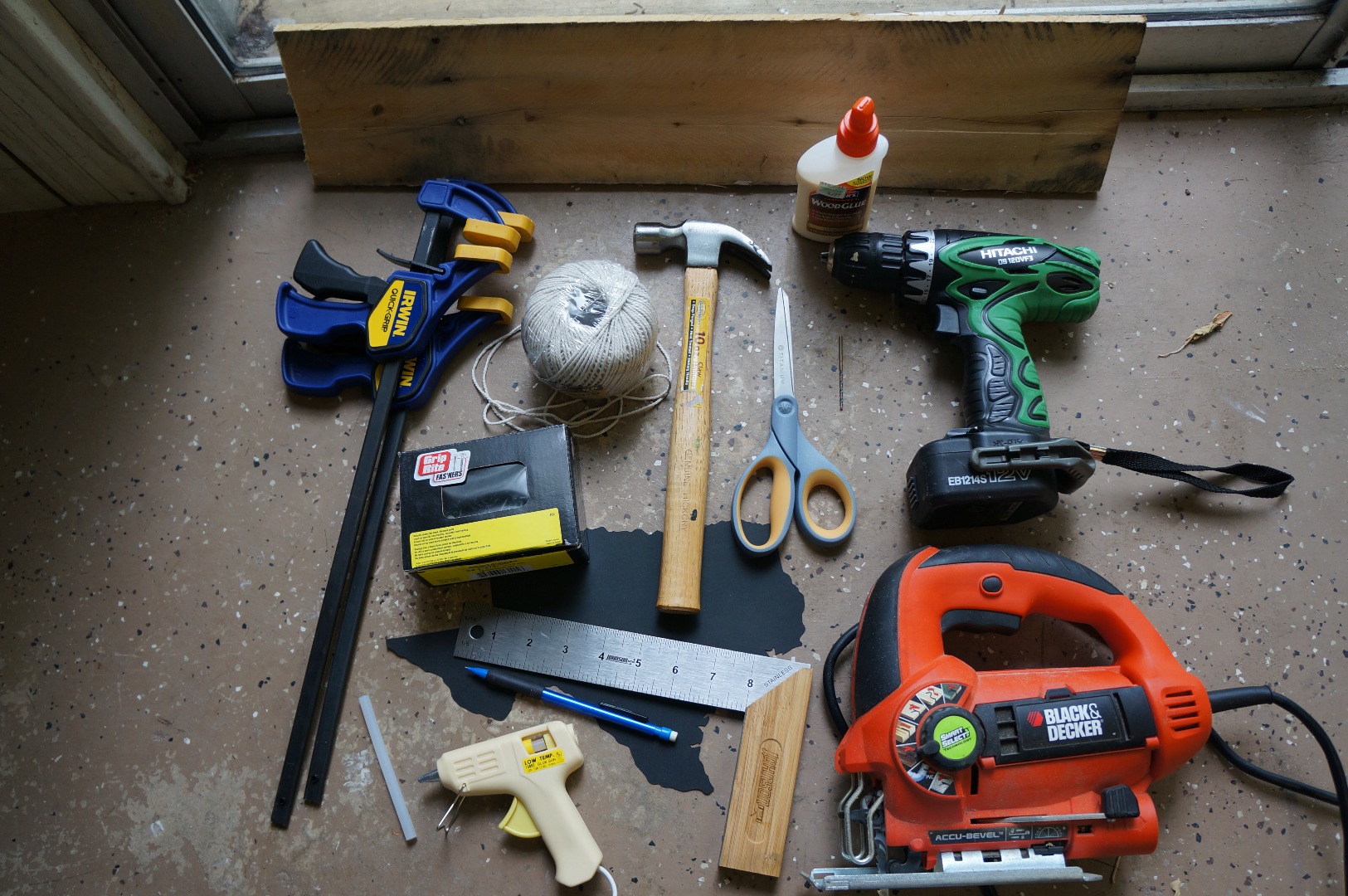
You will need a few basic tools to make this happen.
Tools (required):
- Hammer
- Power Drill
- 1/16" Drill Bit
- Hot Glue Gun (My fingers and I prefer Low-Temp)
- Scissors
- Pencil
Expendable Materials (required):
- Bright Common Nails - 3d, 1-1/4" (3.18cm) long
- Natural Cord - I found a 260 ft roll @ Hobby Lobby
- Hot Glue Sticks - to match glue gun above
- Cardstock - I used 12" x 12" sheets, weight is not critical
- Tape - almost any kind will do
Optional (but highly recommended) Tools:
- Die cutter machine - i.e. Cricut, Silhouette - See if you can borrow a friend's or get access to one at a local makerspace.
Also pictured in this step are the tools I used to construct my base. As I said earlier, we will not cover how to use them. But, just for completion sake:
- Saw - I used a jigsaw. There are better alternatives.
- Clamps
- Wood Glue
- Square
Software
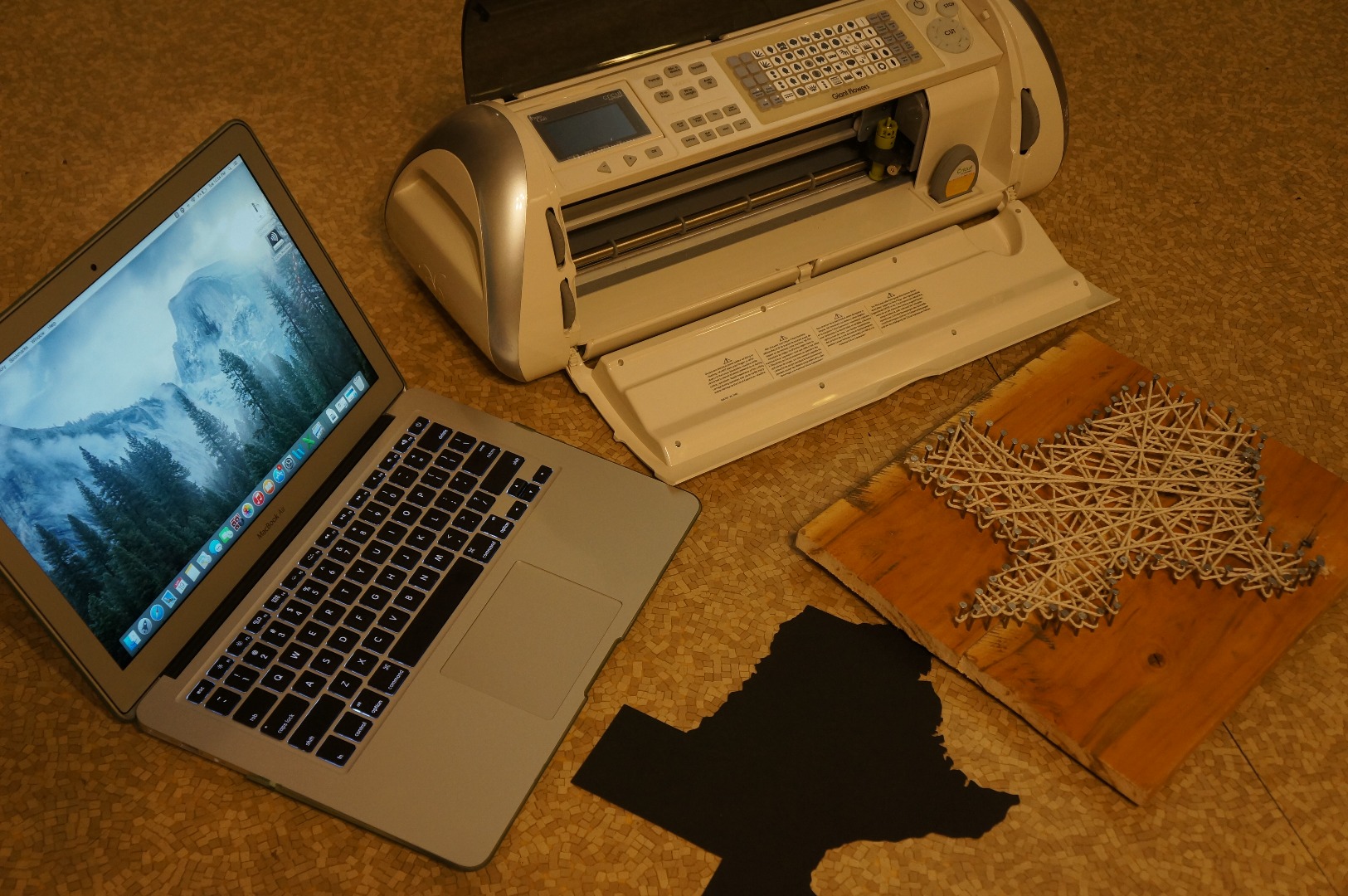
A quick note on software: You can create string art without a computer. The tools listed below just help you make a better stencil with far less effort. Also, there are many other programs out there that are capable of creating and editing these files as well. These are just the ones I know of and/or use myself.
Die Cutter Software - Should accompany whatever cutter you decide to use. Some examples are:
Vector Graphics Software - To modify and/or create SVG files
Optional Software - probably not required but cool to have anyway ;)
- QGIS - for you hardcore cartographers
All About That Base
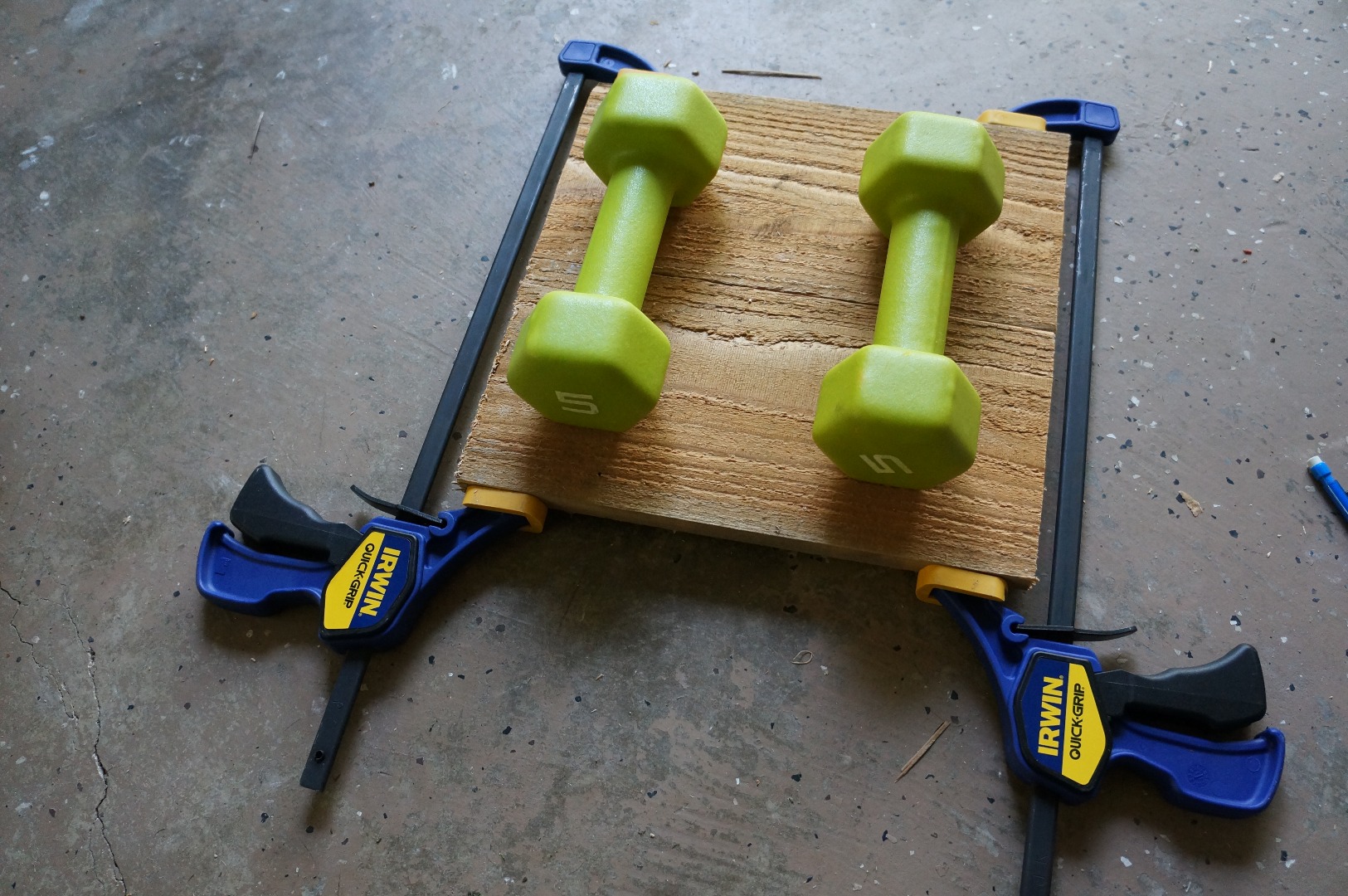
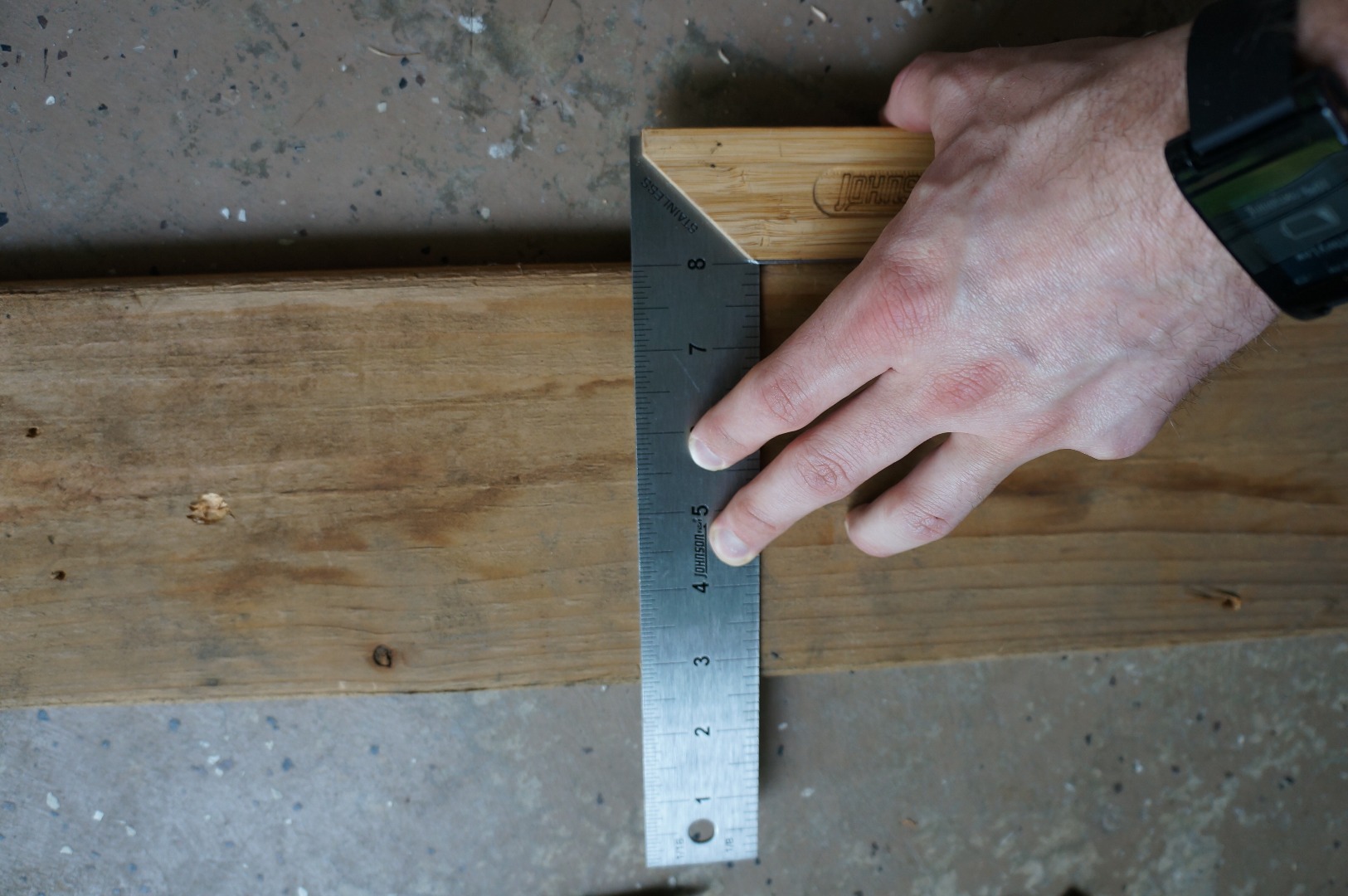
Going through the procedure for constructing the base is beyond the scope of this Instructable. Why? Because it's totally ambiguous and wholly dependent on your individual goals for the project. You could make a 5 ft by 5 ft monster, cut out a custom shape, or anything in between. You could splice together several small boards or just use a full sheet of scrap plywood.
The only requirement is that your base be:
- At least 1/2" thick --- those nails need something to hold onto!
- Relatively flat
- Capable of accepting nails --- i.e. not a steel plate (unless you're a welder)
- Structurally sound --- no major cracks, not going to fall apart when you nail it, etc.
My advice would be to get creative with what you have. For the two projects pictured in this Instructable I spliced together two sections of a piece of pallet wood and the top of an old fence picket. It feels to good to re-purpose some scrap material and the old wood has a lot of added character. Plus it's cheap!
OMG, SVG!
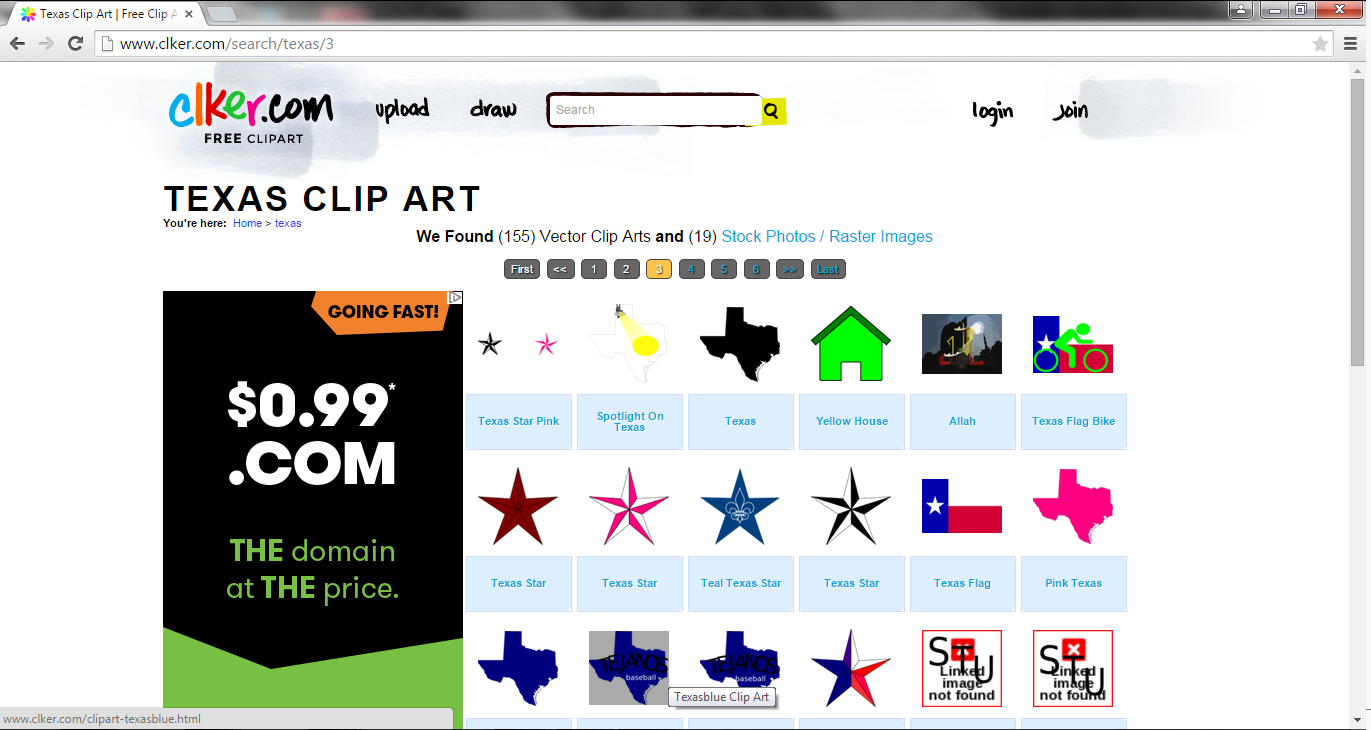
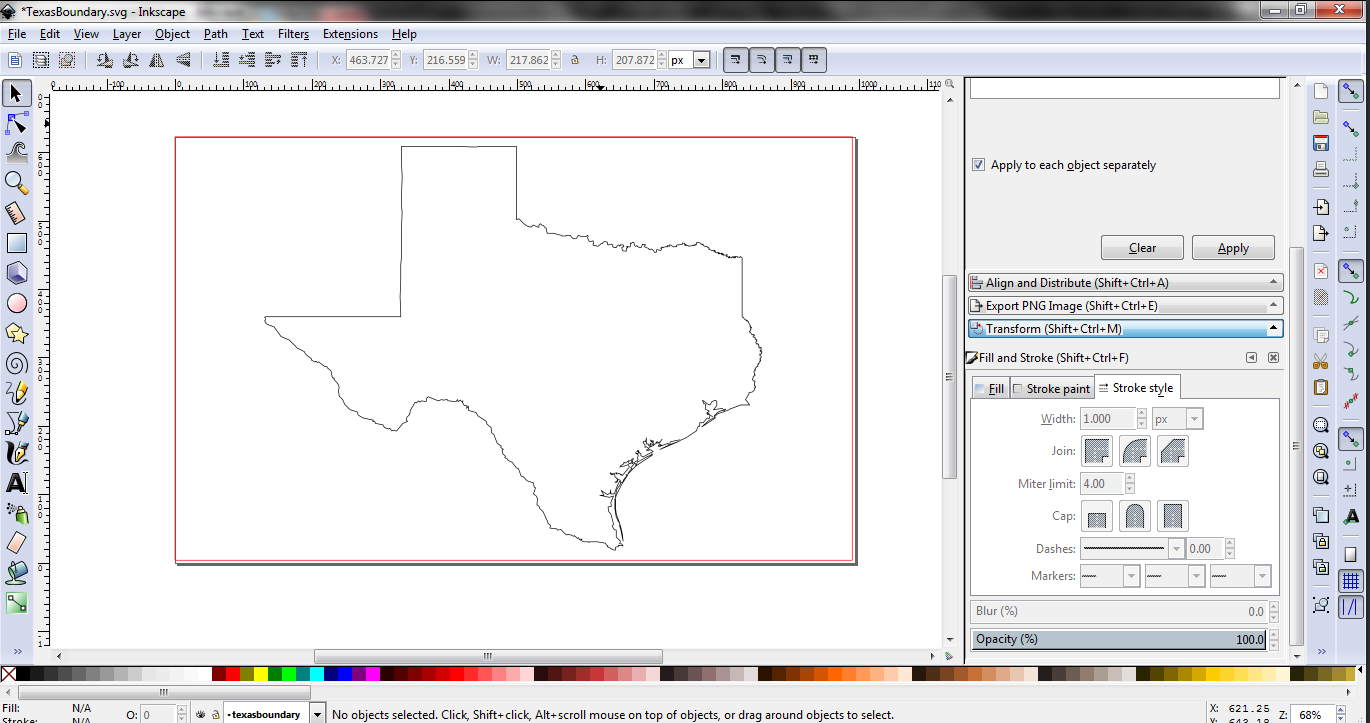
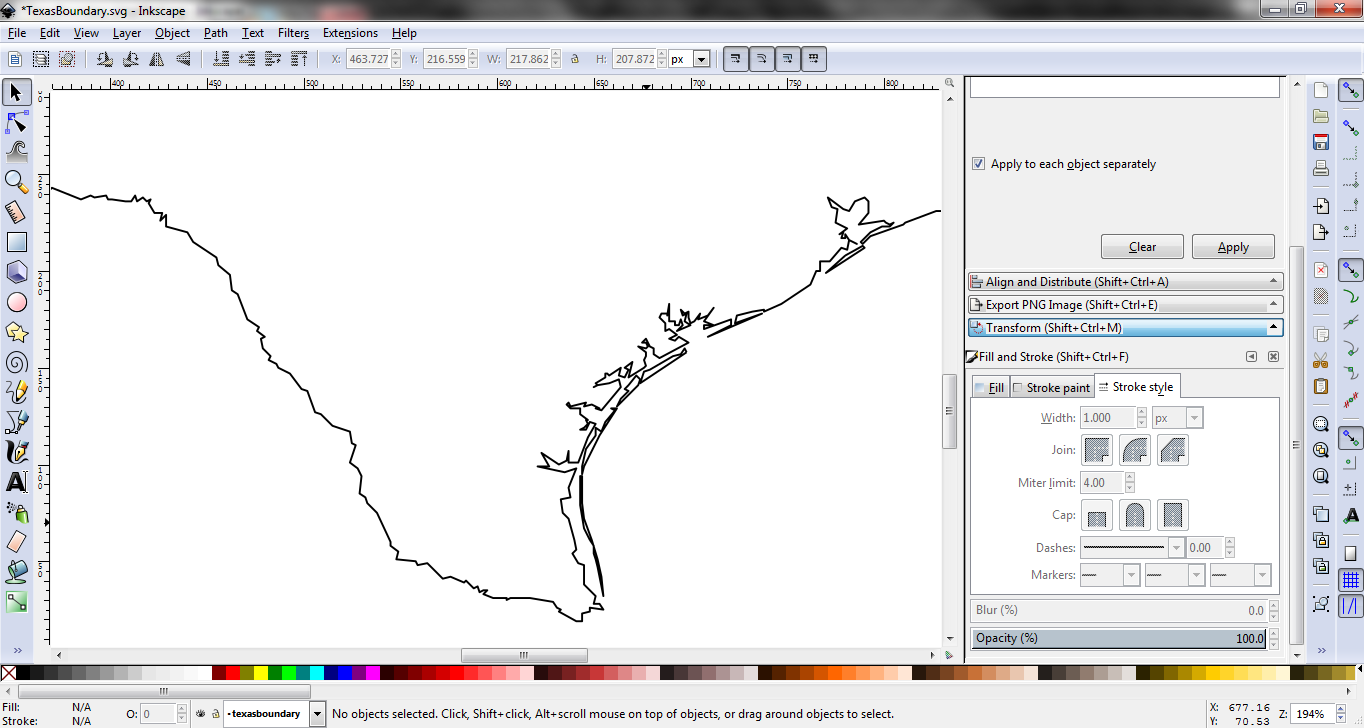
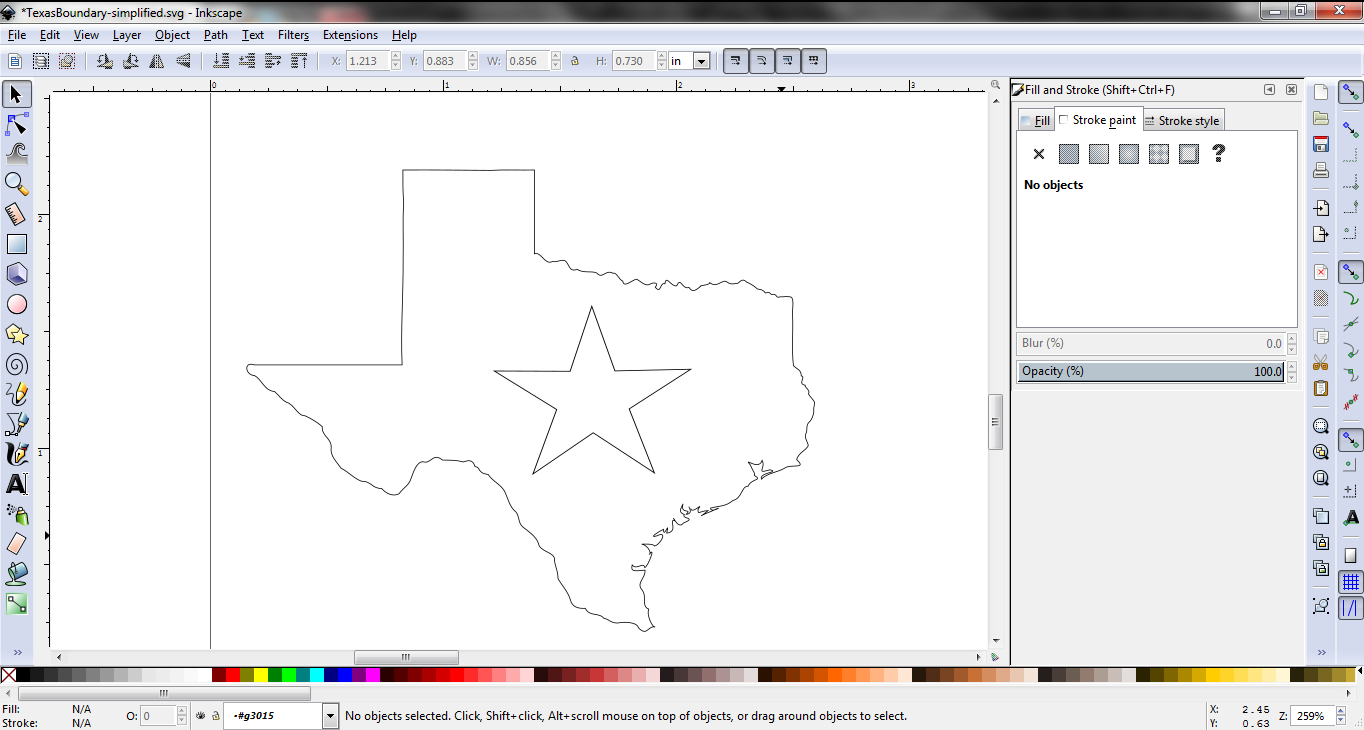
The ultimate way to make a stencil is with a die cutting machine such as a Cricut or Silhouette. These machines function more or less like an inkjet printer, but instead of ink they use a small blade to cut thin materials like cardstock and vinyl. Most of them accept scalable vector graphics files (SVGs), which is the format our map will be in.
SVG files are available from a number of online sources. A simple search for, say, "Texas SVG" usually turns up a number of sources (Beware: some are not free). I was able to find the Texas and Venezuela outlines for both of my pieces at clker.com. They have many other SVGs available for download as well.
If you can't find what you are looking for, or would like to create your own custom shape, there are some options. Geospatial Information System (GIS) software such as QGIS has plugins that allow you to export maps (shapefiles, .shp) as SVG files, or you could always just start doodling in your vector graphics program. Perhaps I will cover one of these in more detail in a later Instructable.
I would recommend that you preview your SVG file in a vector graphics program such as Inkscape or Illustrator before you attempt to send it to your cutter. Most of the time everything is fine, but in my Texas map I decided to cut out the barrier islands and simplify the paths a bit. For just a basic outline most of the really minute details are overkill.
You could also add an interior shape to your map. Perhaps a star, or a circle above your hometown. I thought my pieces were a bit too small to attempt this. Also, my hometown is not far from the coast, so things might get a little tight down there...
Once you are satisfied with your SVG file then save it away and head on over to your cutting software.
#2 Stencil Sharpener
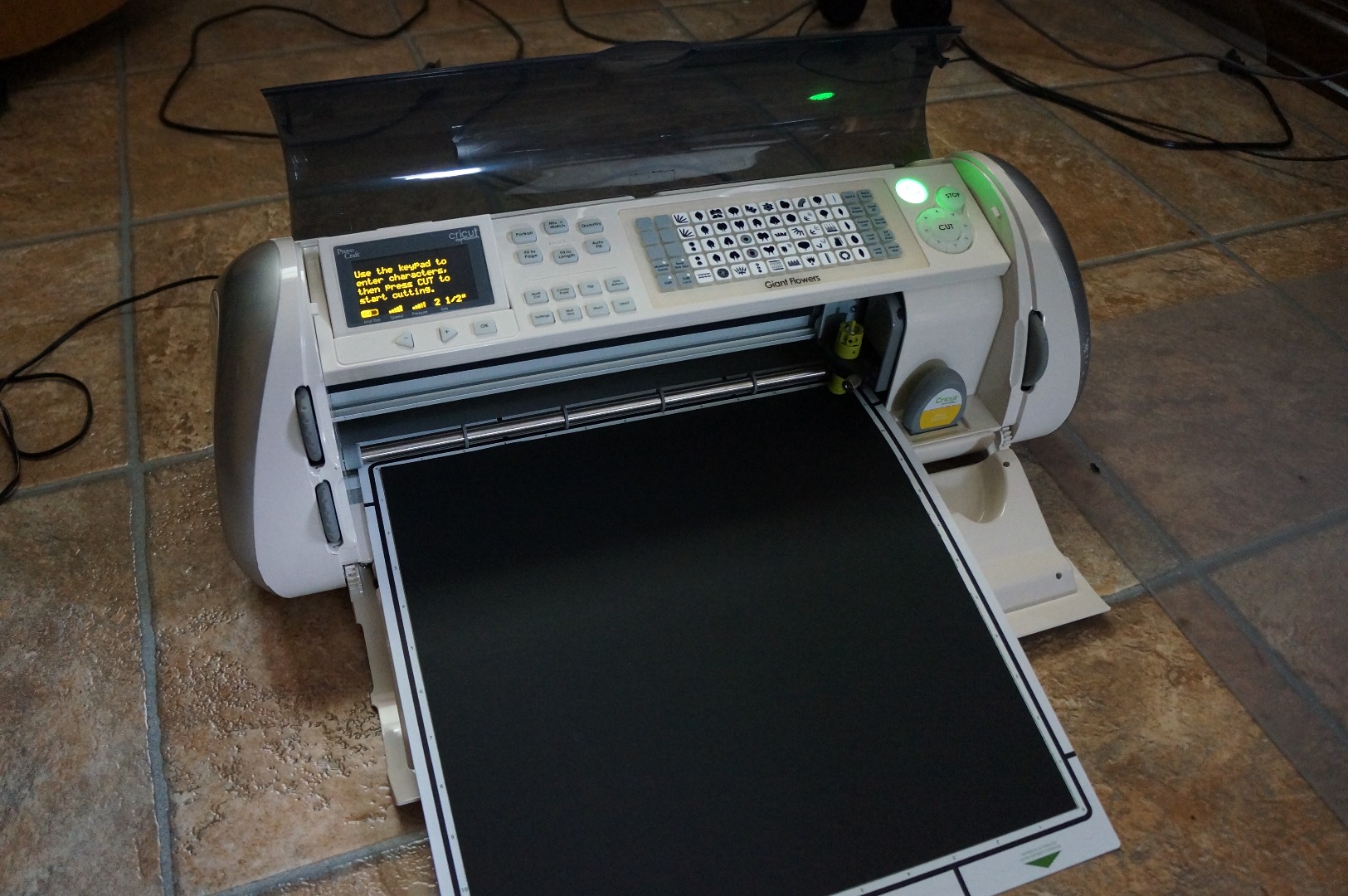
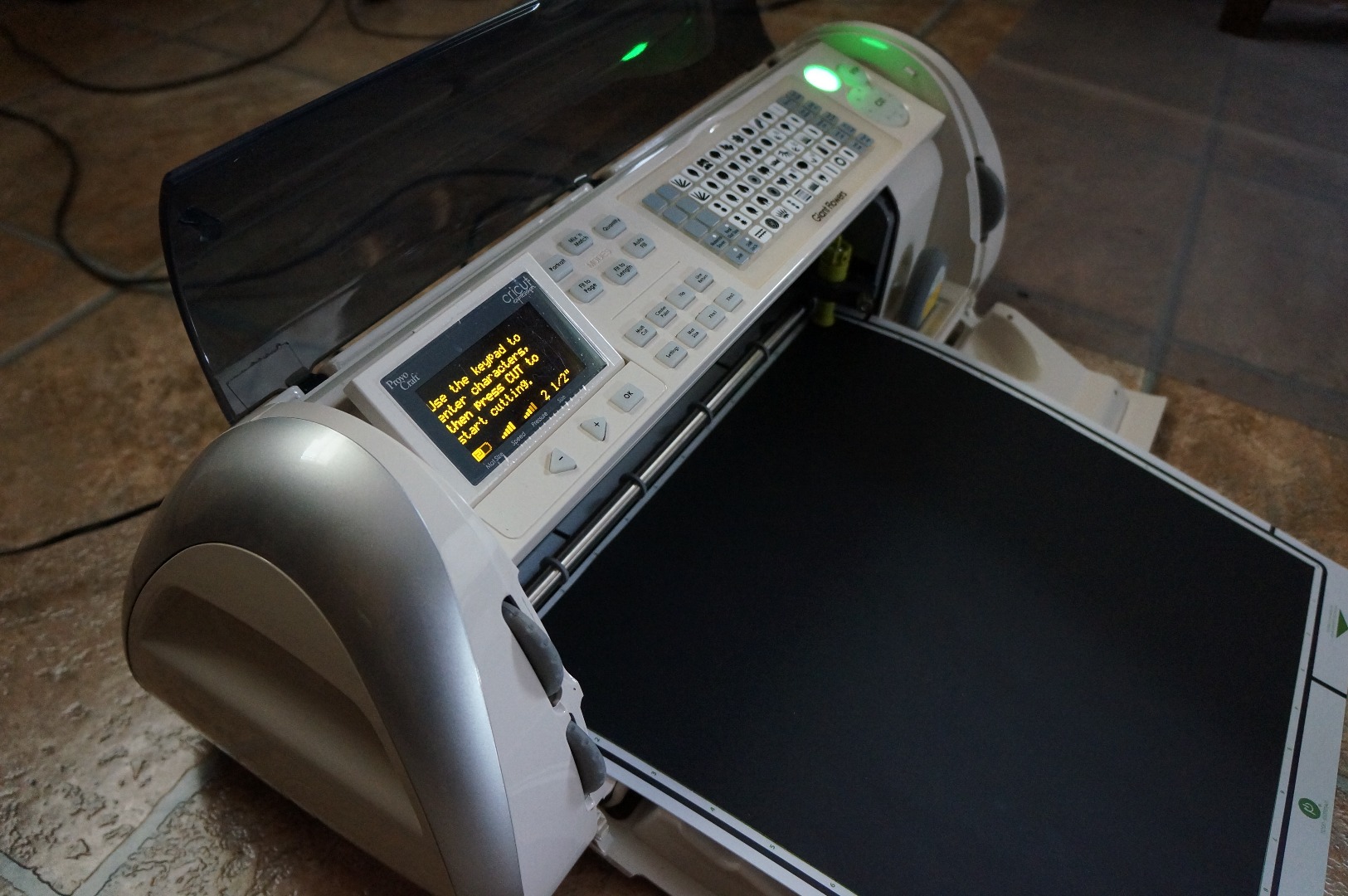
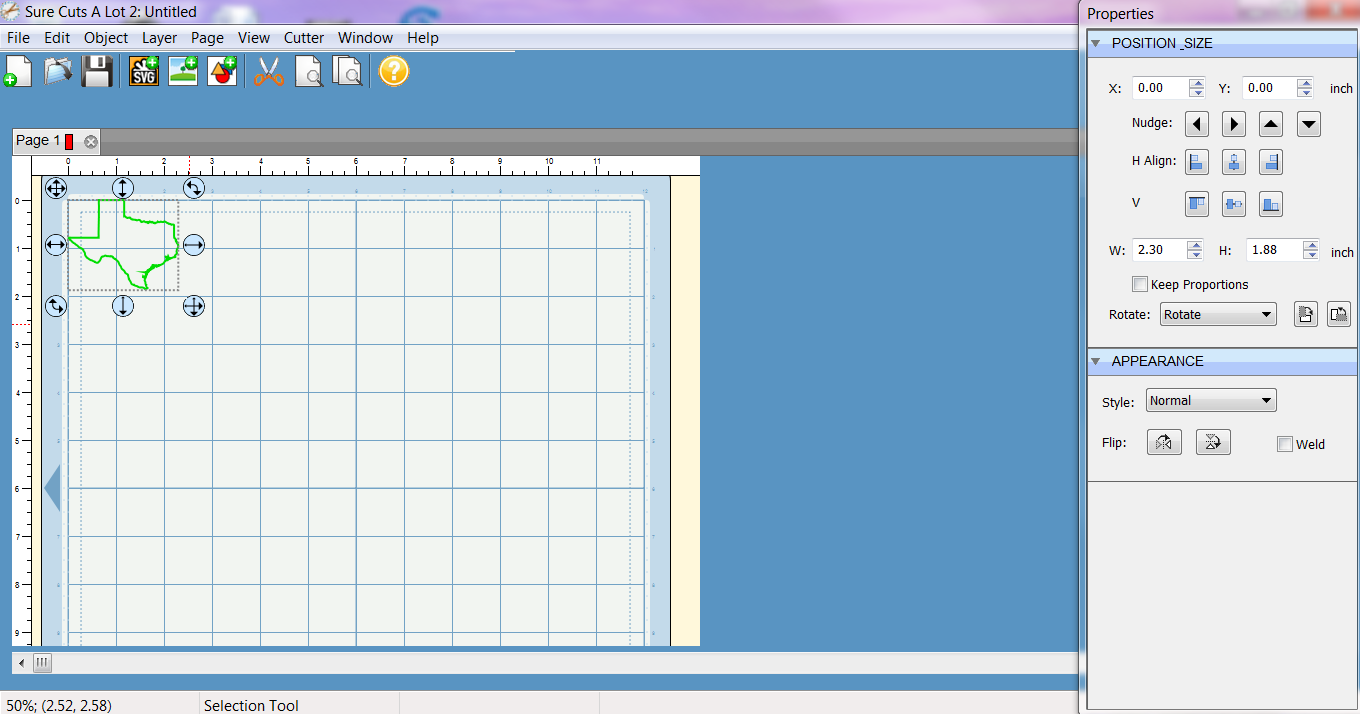
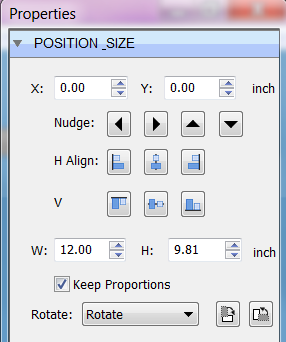
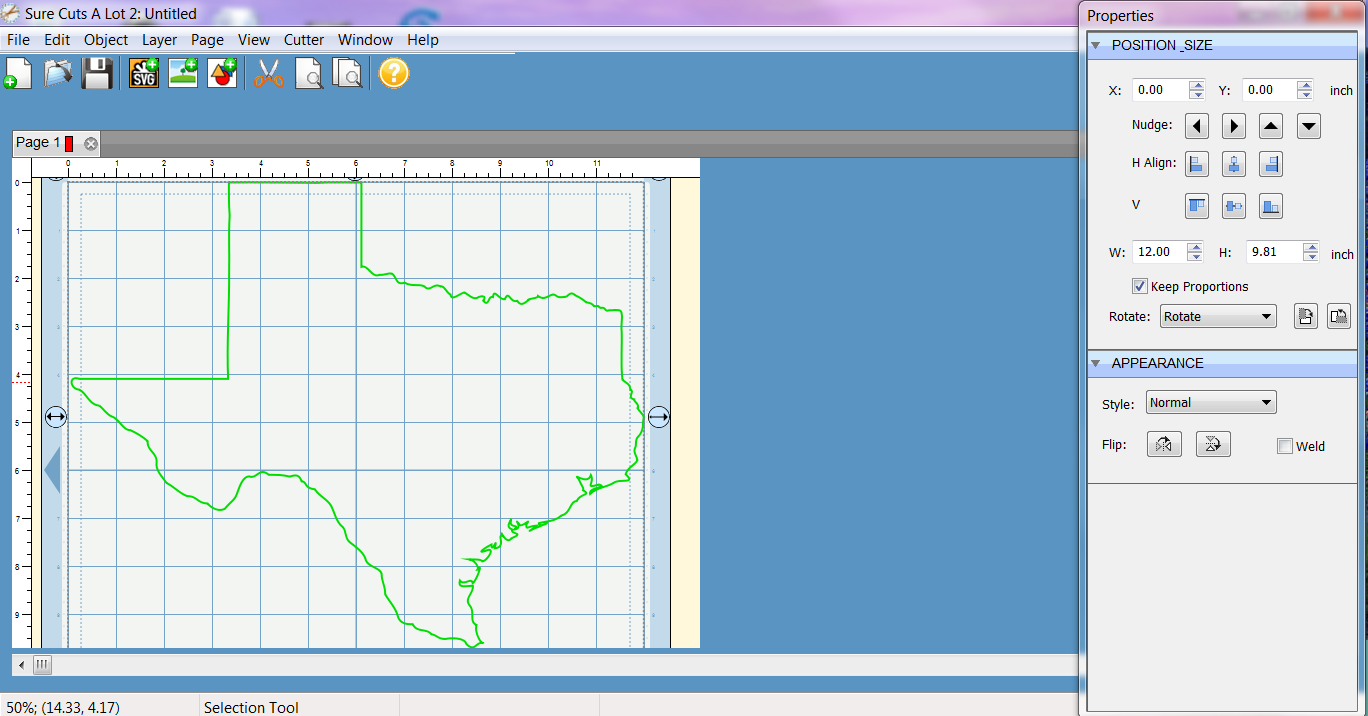
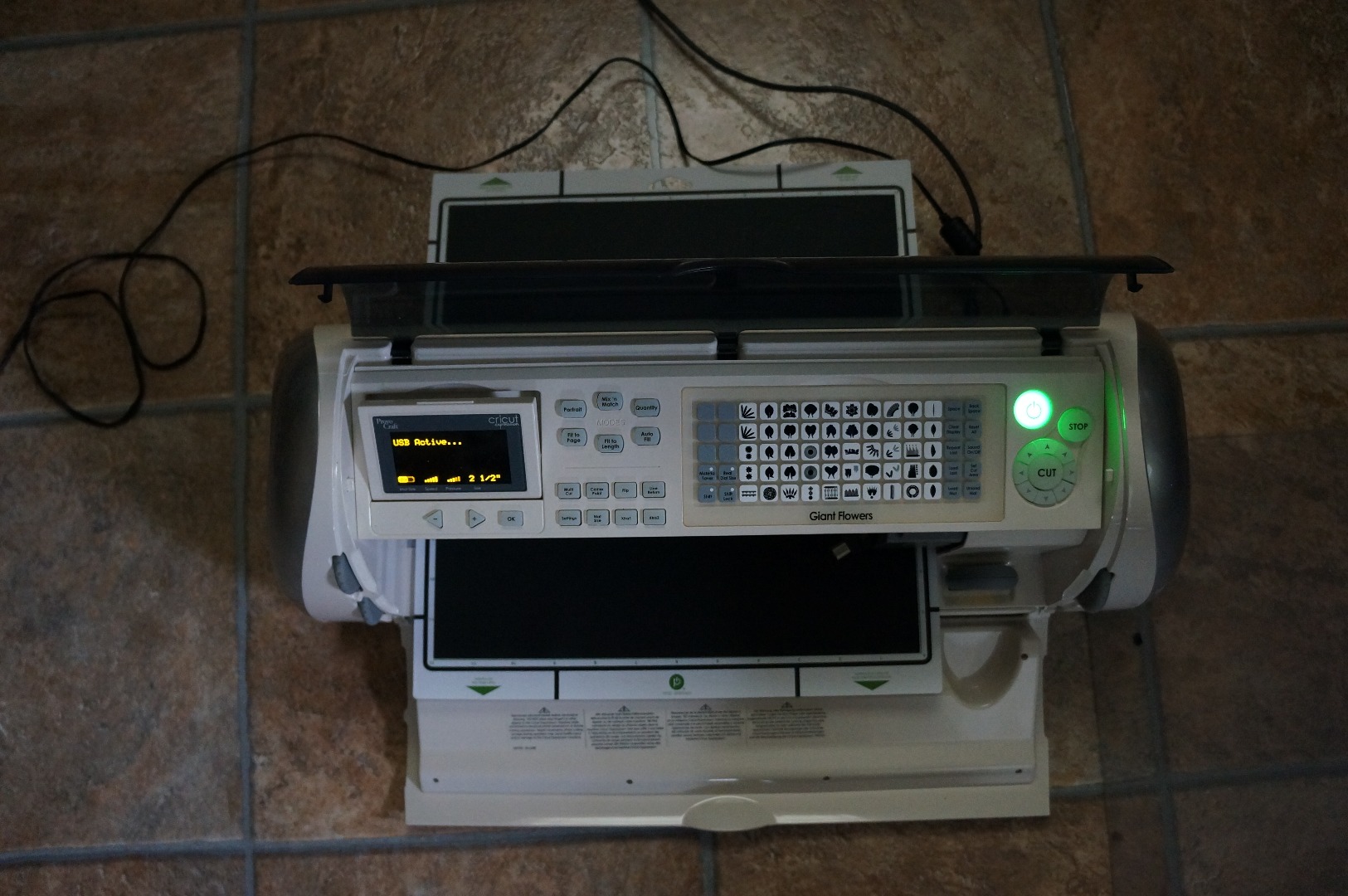
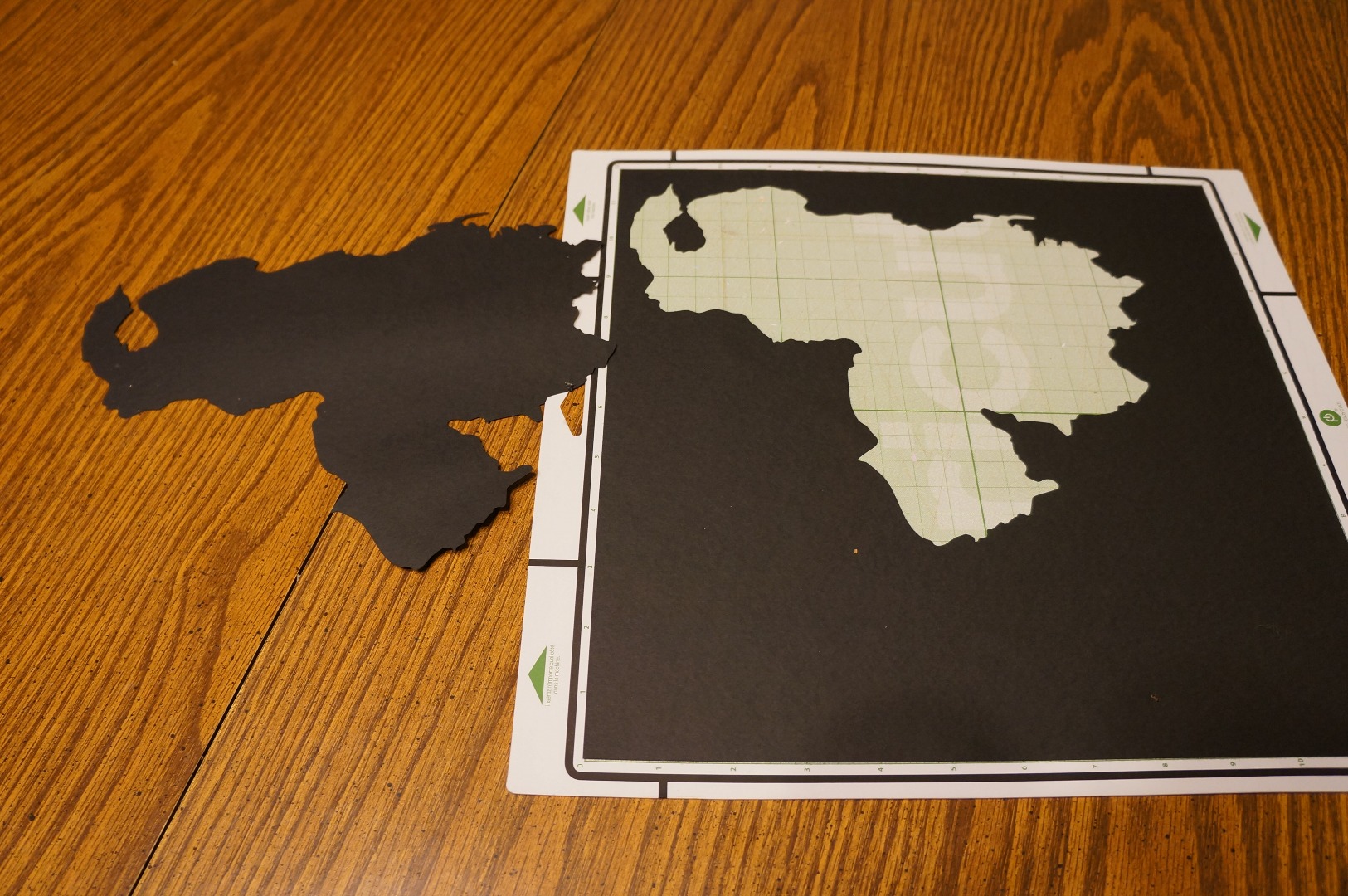
Open up your cutter software and import the SVG file you created in the last step. Next we need to scale it. Resize it using the following guidelines:
- It fits on your base material --- duh.
- The maximum dimension of your stencil is at least 1" less than the maximum dimension of your base --- This will leave at least a 1/2" buffer from the edge of the base.
- The aspect ratio must be locked --- to ensure your map scales proportionally
Once everything is scaled to your specifications then load your cardstock and cut it out. Boom! A perfect stencil! Carefully peel it off of the mat and move on to the next step.
For those of you without access to a die cutter, all is far from lost. You can make your own stencil with just a pair of scissors, some cardstock, and some basic drawing tools. An outline traced from an old atlas will do the trick.
Also, don't limit yourself to maps! The remainder of this procedure is the same no matter what shape you are cutting. Stars, letters, abstract shapes...they all work!
Make Your Mark
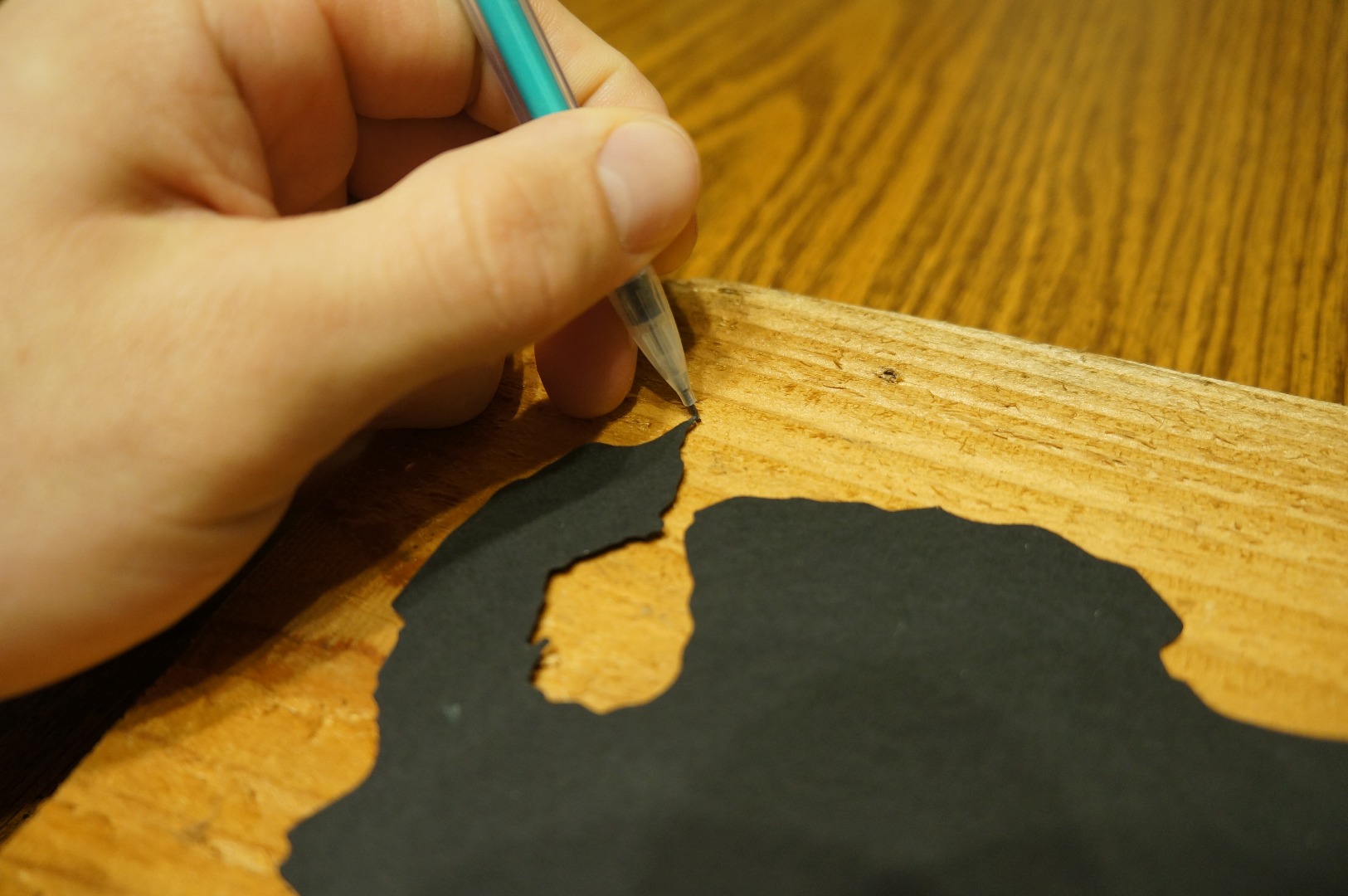
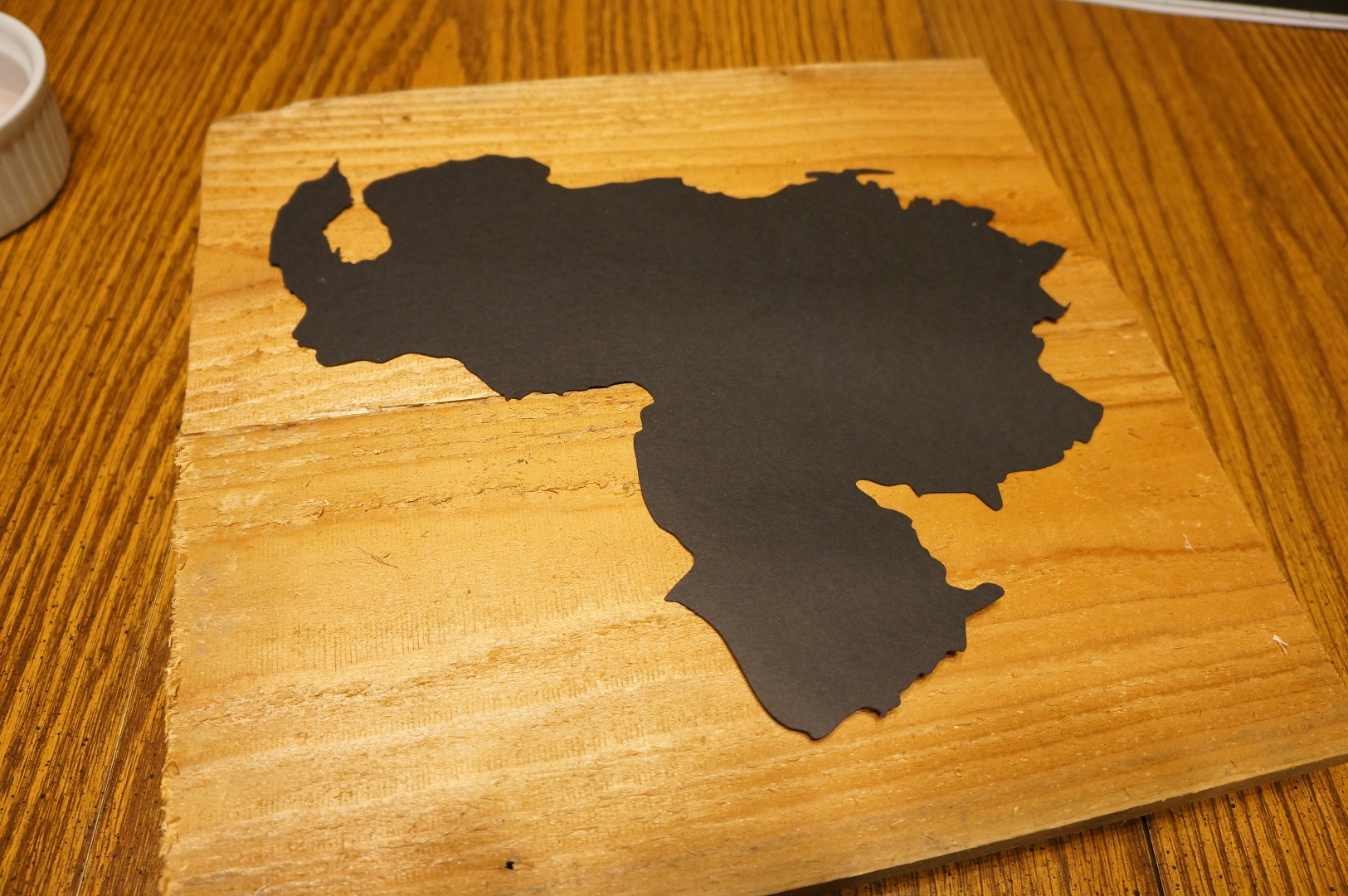
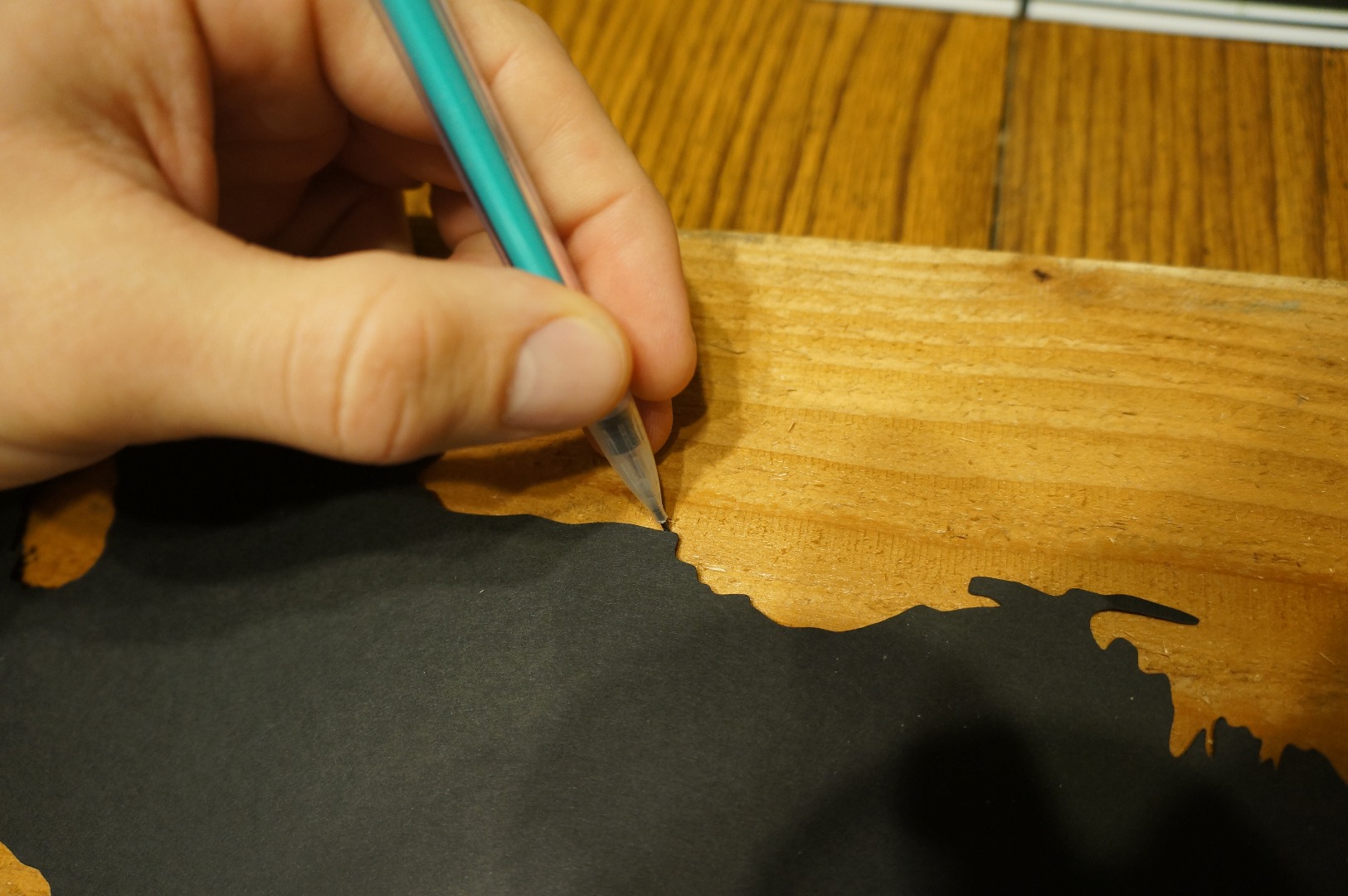
Position your stencil on the face of the base material. I would recommend maintaining a buffer distance of at least 1/2" from the edge of the base material. If you are concerned about it slipping out of place, secure it with a couple strips of tape.
What we are going to do now is mark the positions where each of your nails will go. There is really no right or wrong way to do this with the exception of placing nails too close together. For my designs, I shot for a max spacing between nails of about 3/4" to add plenty of definition to my shapes. For the nails specified, anything less than 1/4" apart is too close. In my Texas piece I got a little crazy around Galveston Bay and the heads of the nails ended up right on top of one another. I was able to overcome this, but it made stringing it much greater challenge.
Using a pencil and the spacing guidelines above, place a small dot at each location along the edge of your stencil where you would like to place a nail. Make the dot as small as you reasonably can to ensure it gets covered by the pilot hole and does not show later.
I started in the corners of each design so I could be sure that the well defined corners of the Texas panhandle, etc. would show up later. I also just eyeballed the spacing, placing more nails around curves or points that I wanted to be more defined. You could use a ruler to get exact spacing between nails if desired.
This Is Your Pilot Speaking...
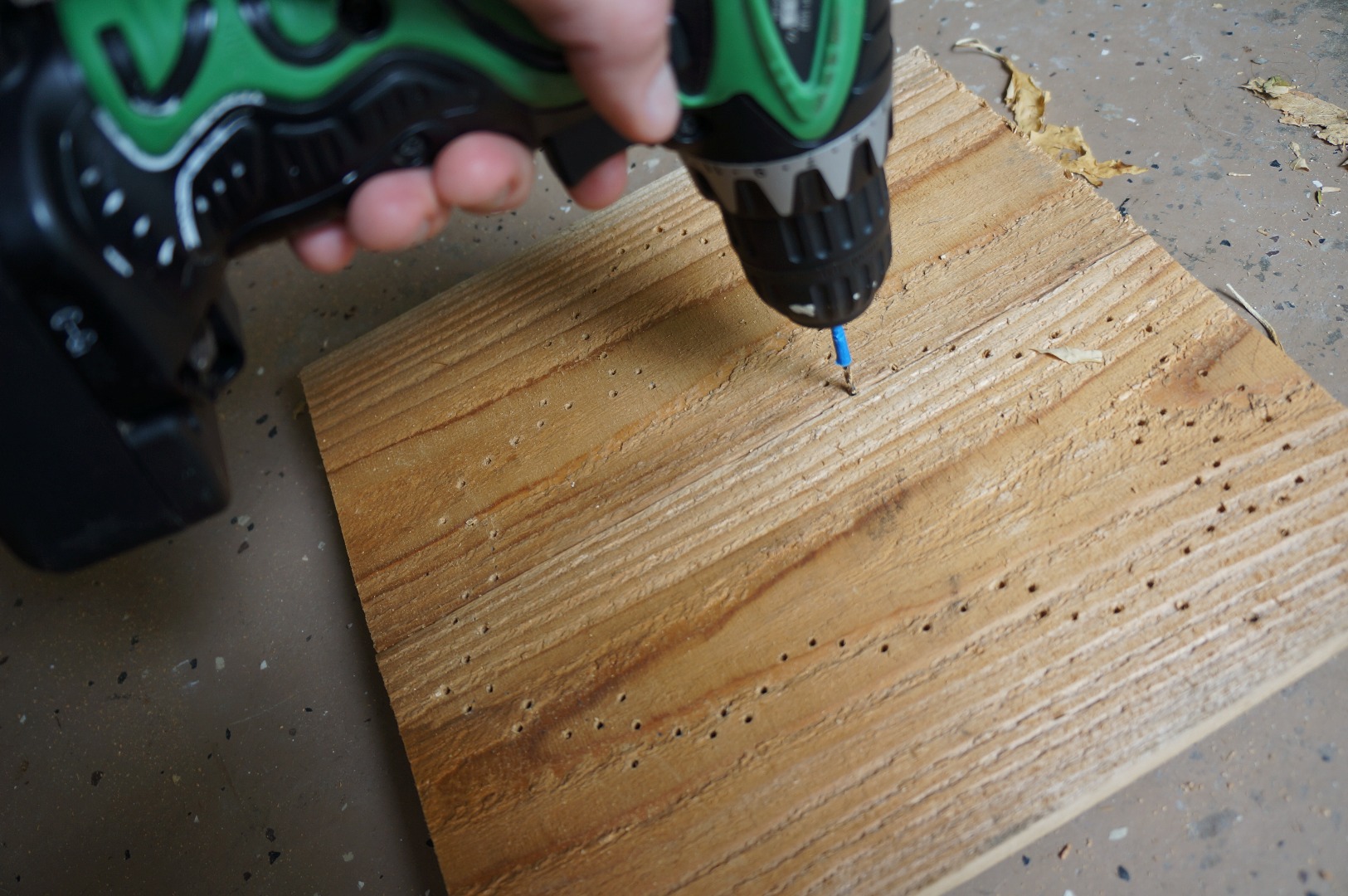
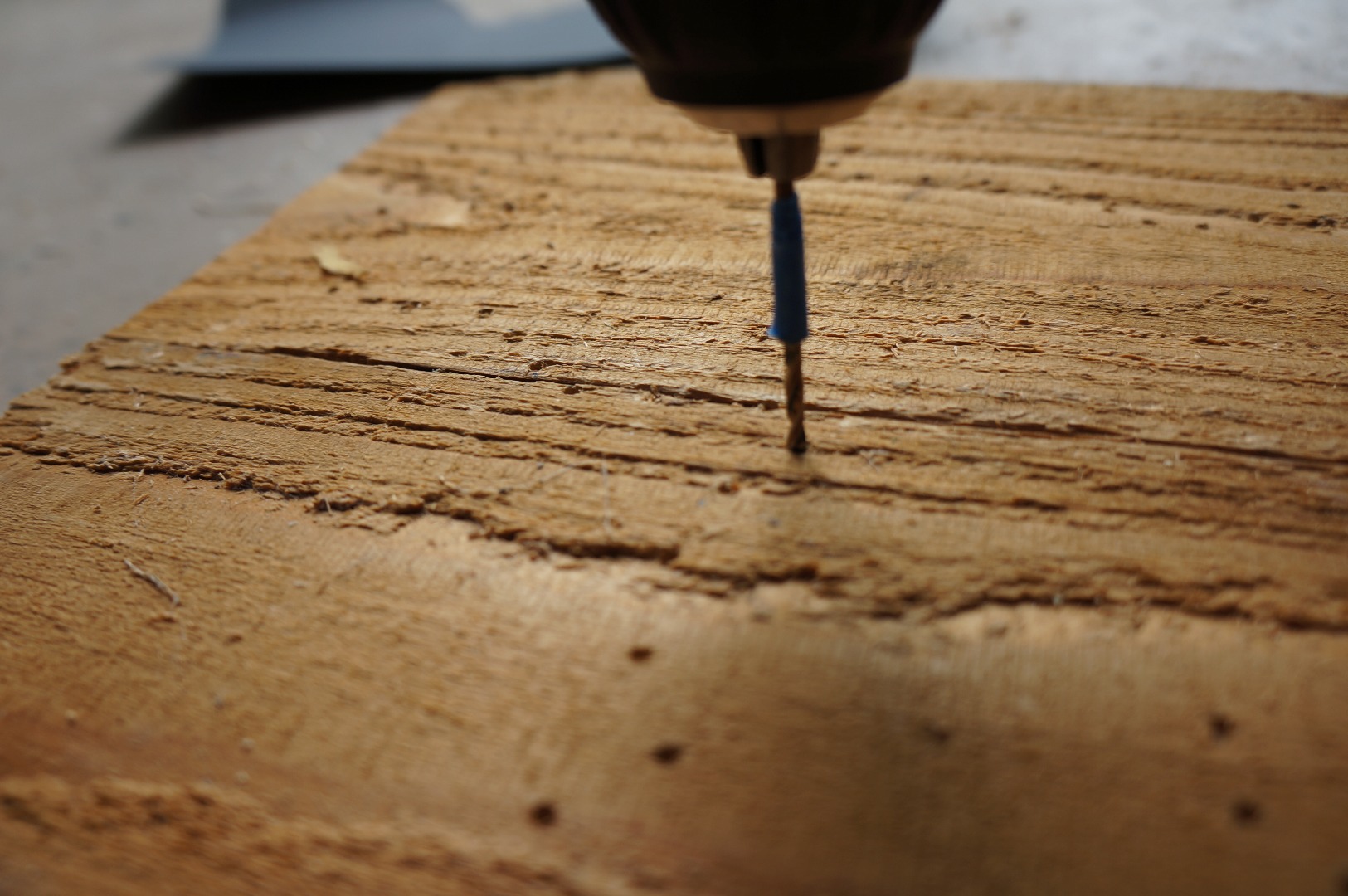
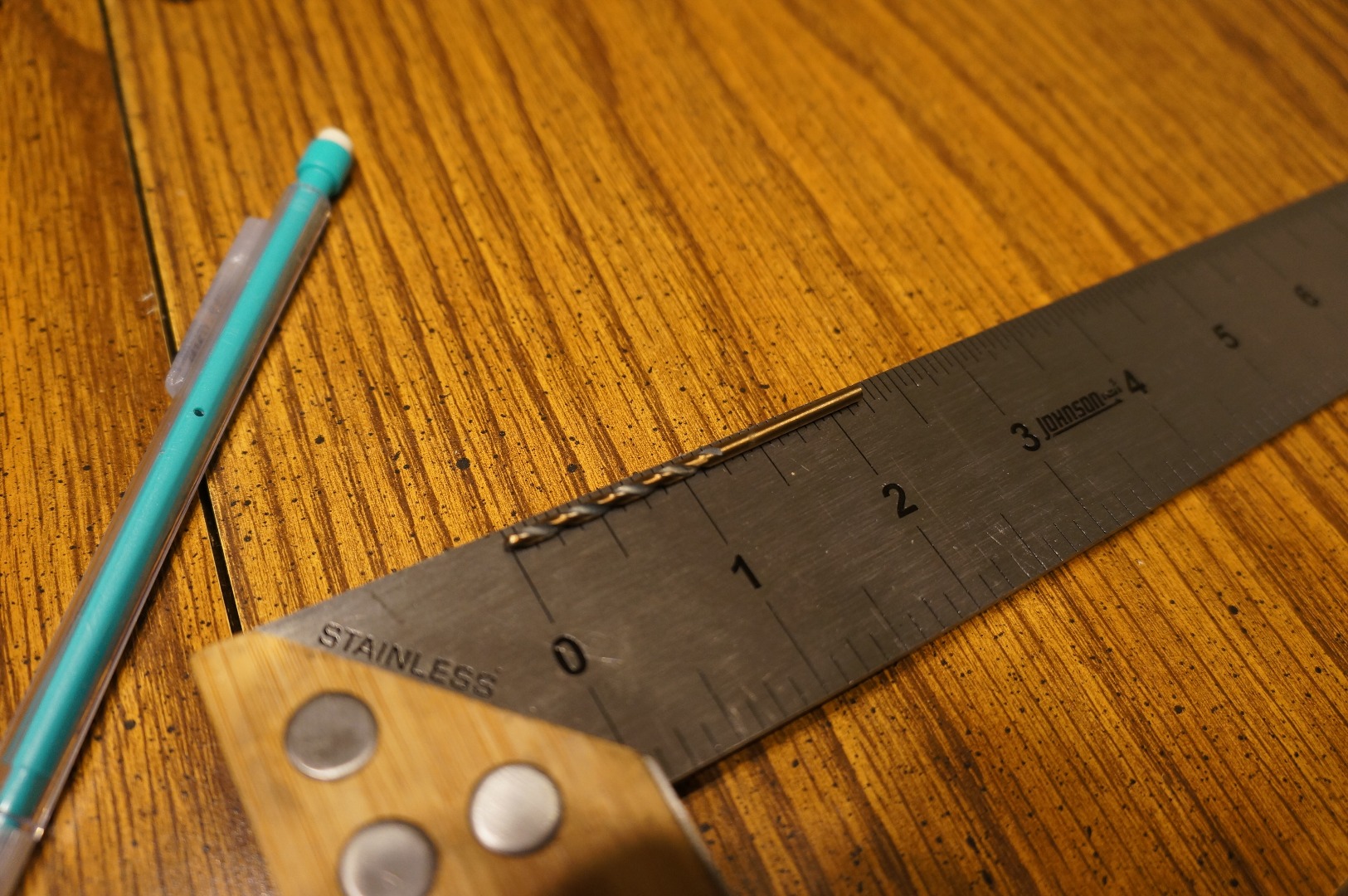
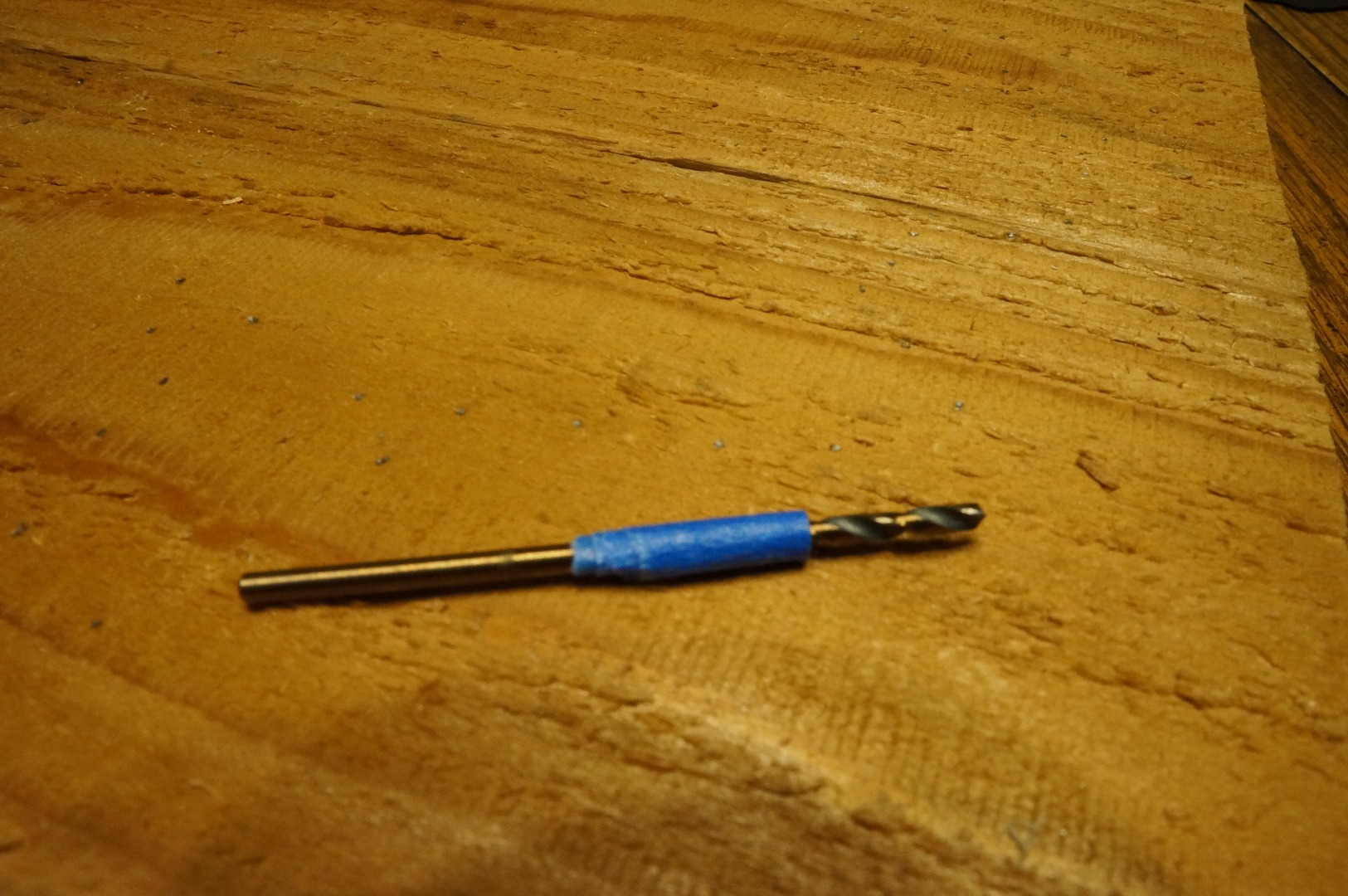
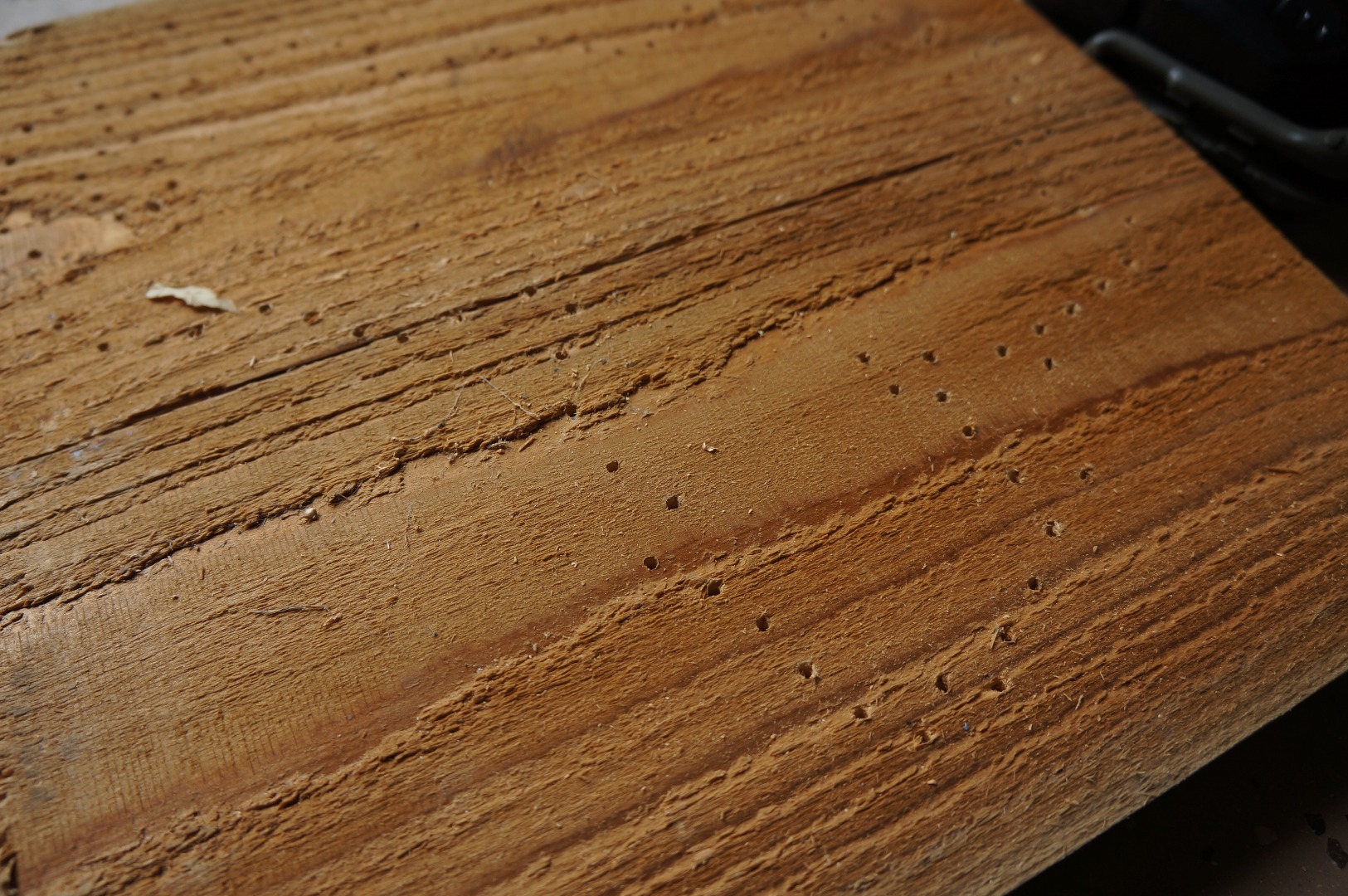
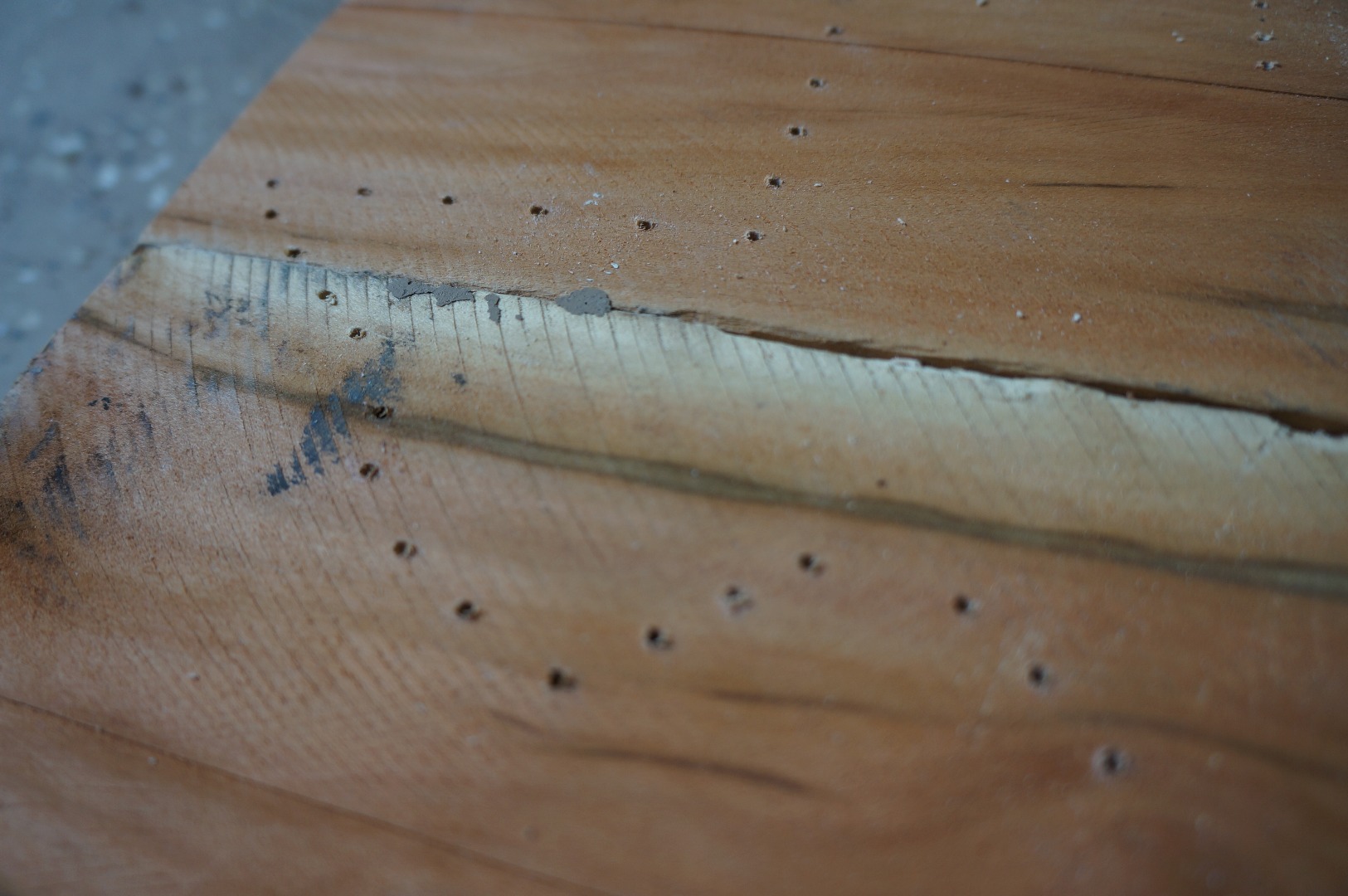
Now that your stencil is ready to go let's drill some pilot holes! They will make it easier to drive your nails and prevent the base material from splitting.
Our nails are 1-1/4" long and we want approximately 3/4" of them to stick above the surface of the base material. Therefore, our pilot hole needs to be about 1/2" deep. Measure 1/2" from the end of your drill bit and mark it with a piece of tape. As you are drilling you will stop once you reach this mark. This will help us drill holes to as uniform a depth as possible.
Drill a pilot hole at each of the dots you marked in the previous step. This may take some time, but it will pay off in the next step. Also, be gentle with the small diameter bits. They are fragile, as I learned the hard way.
Hammer Time
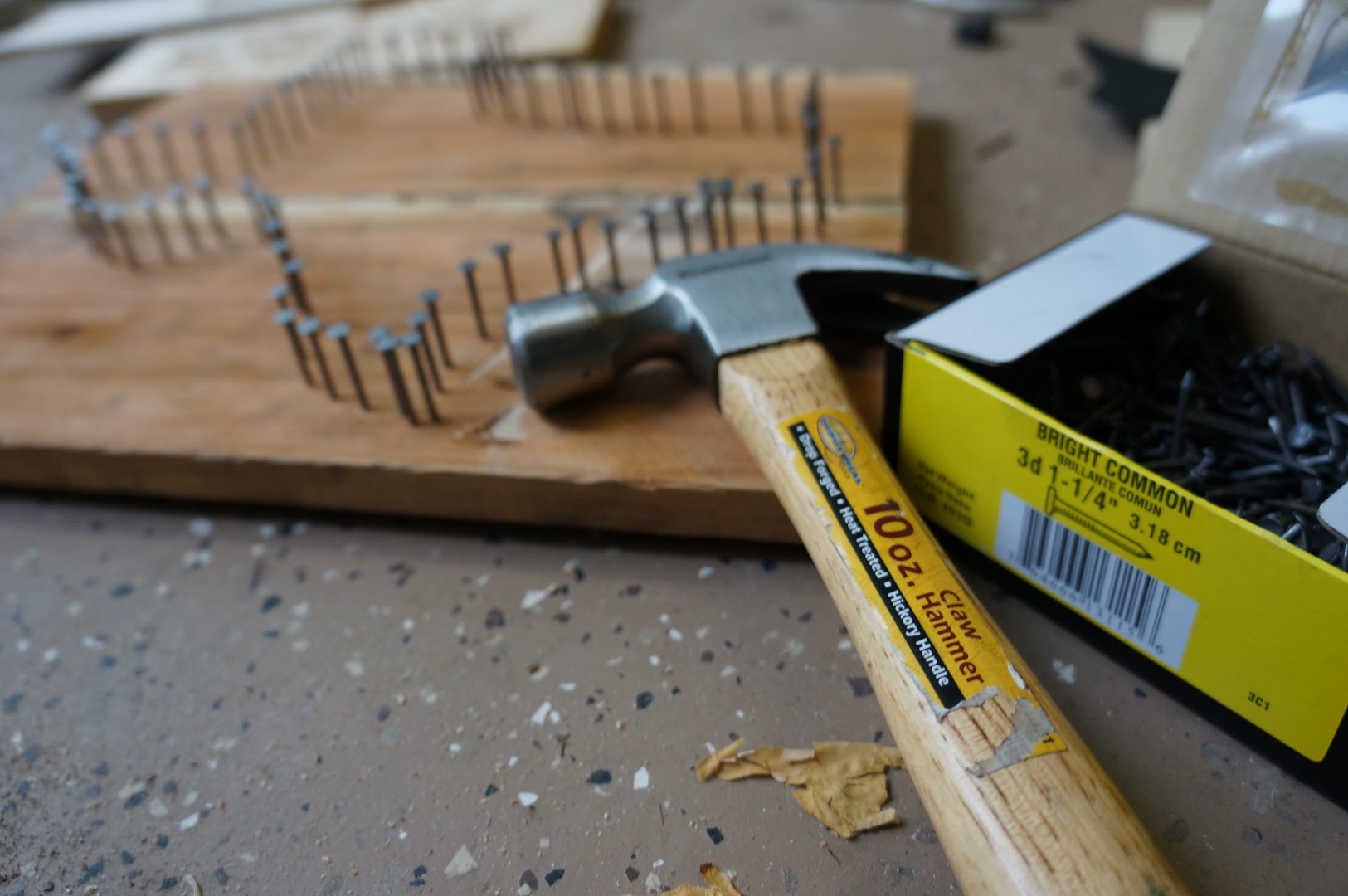
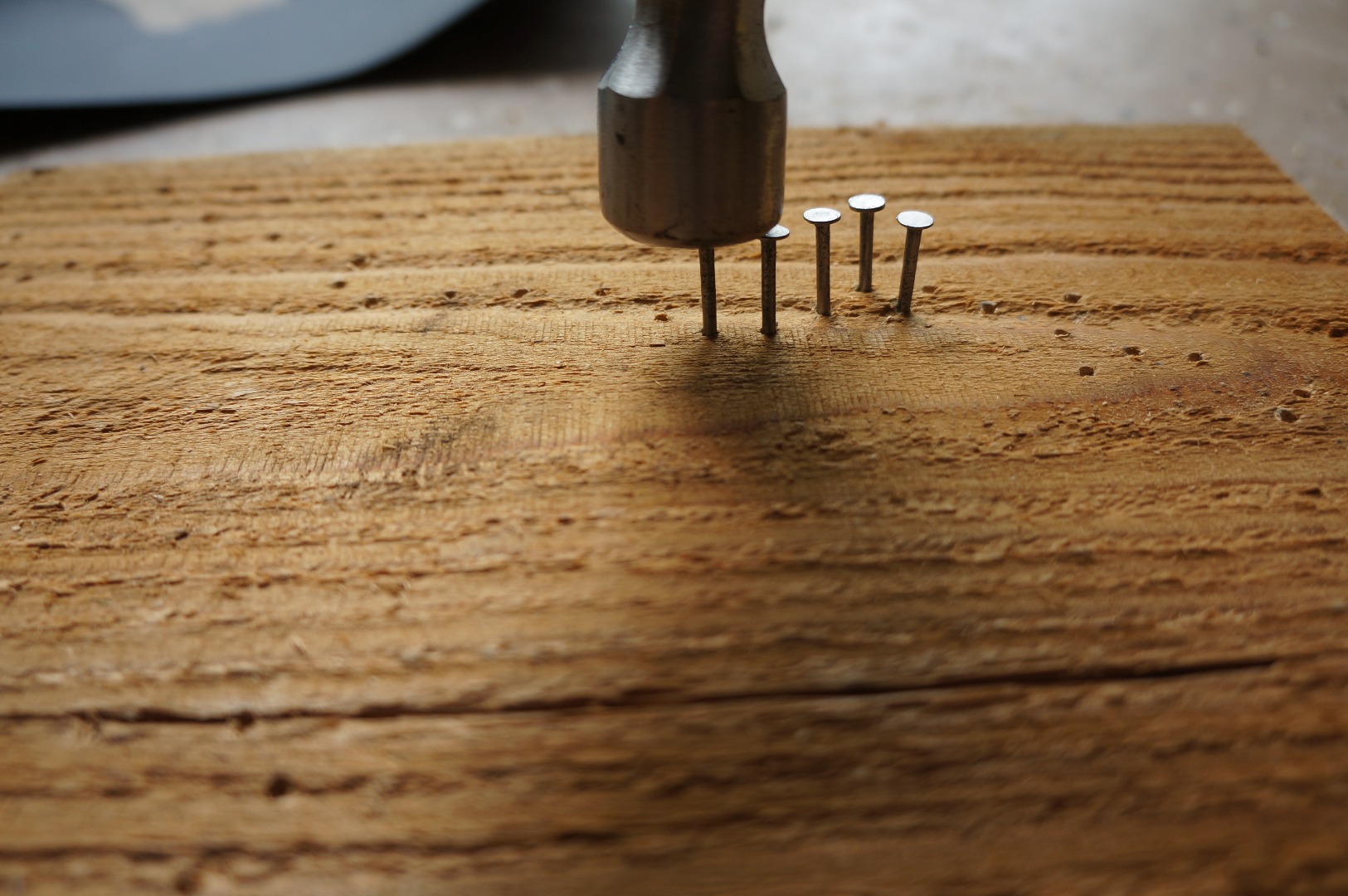
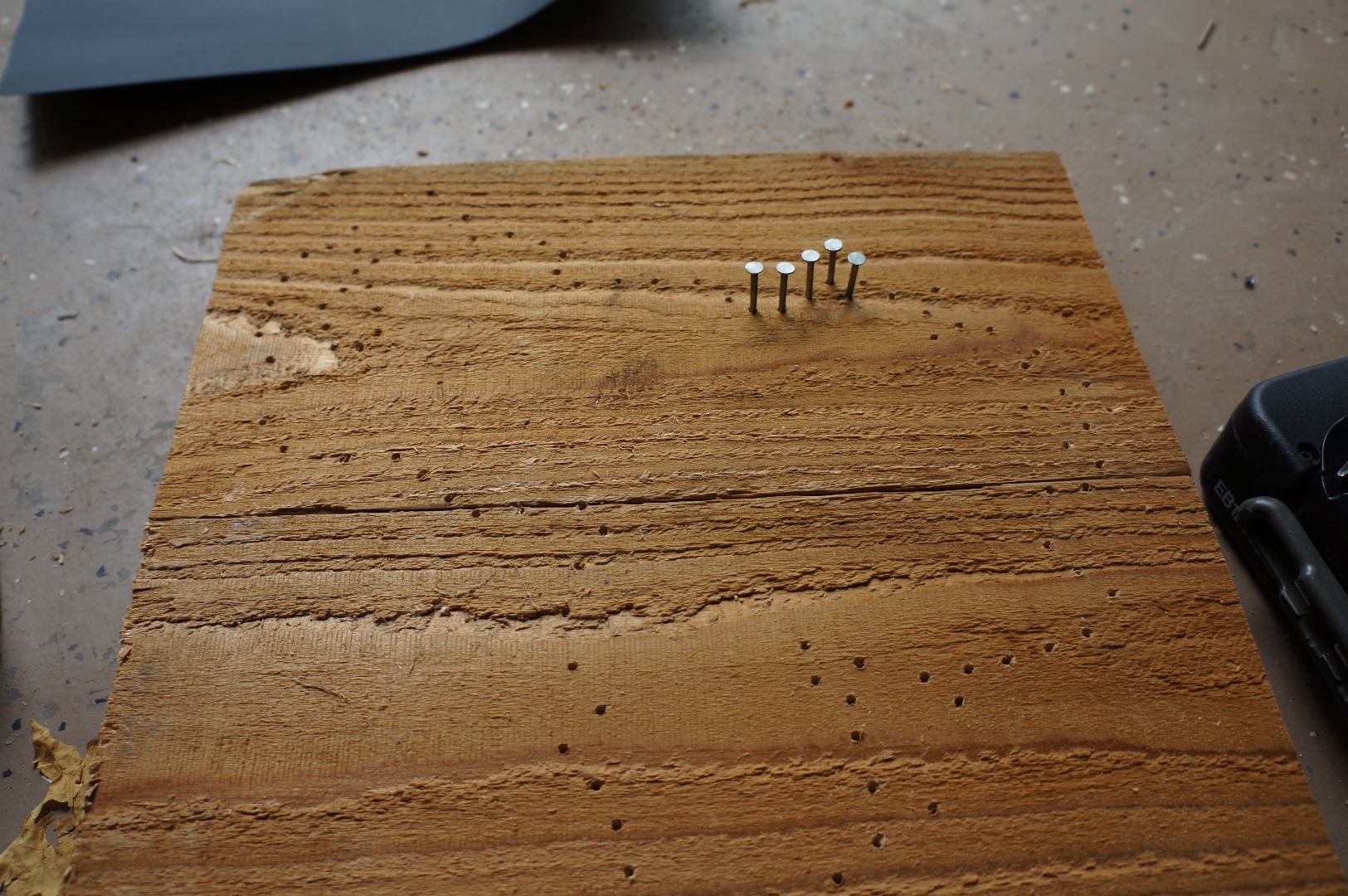
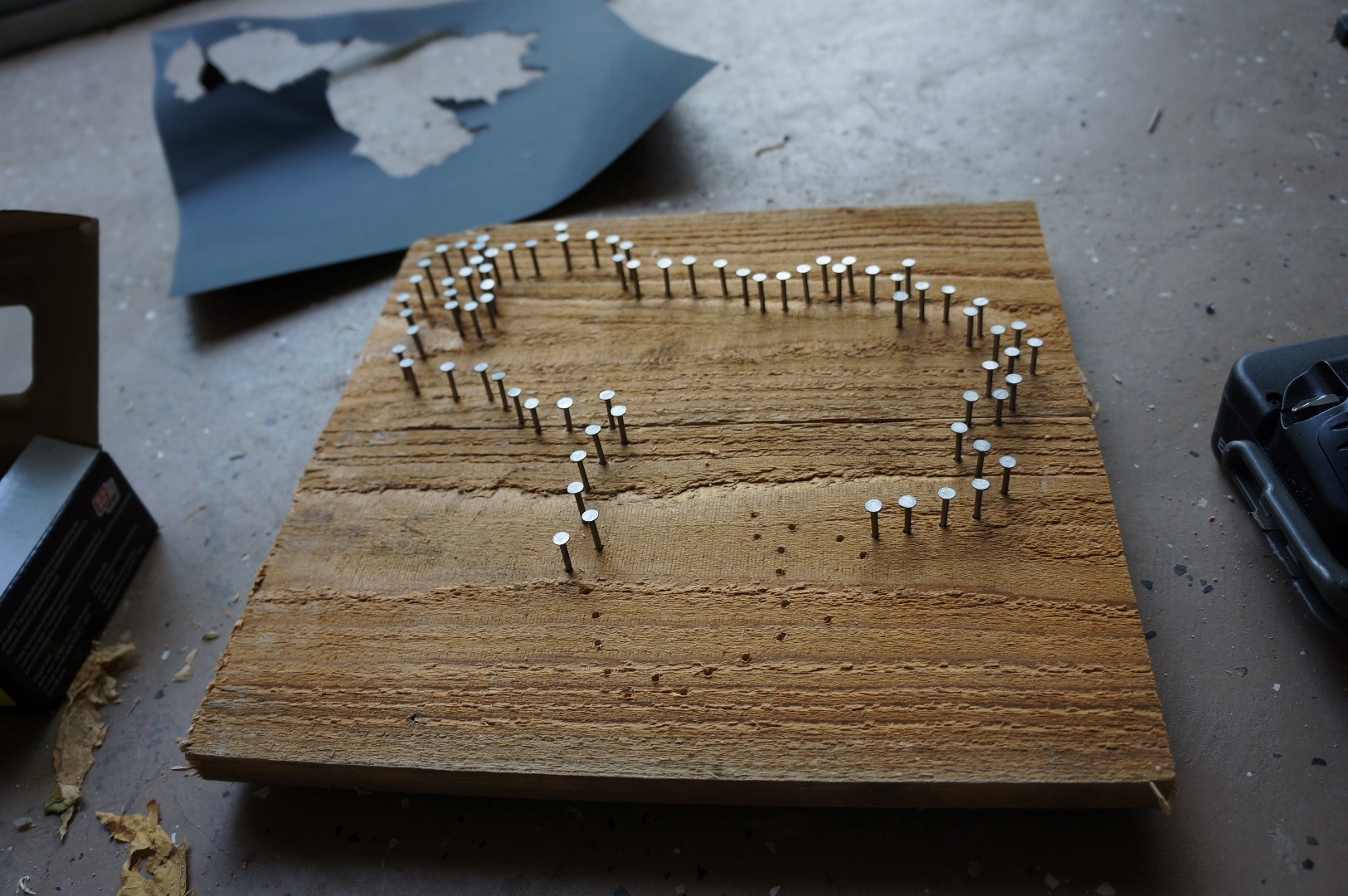
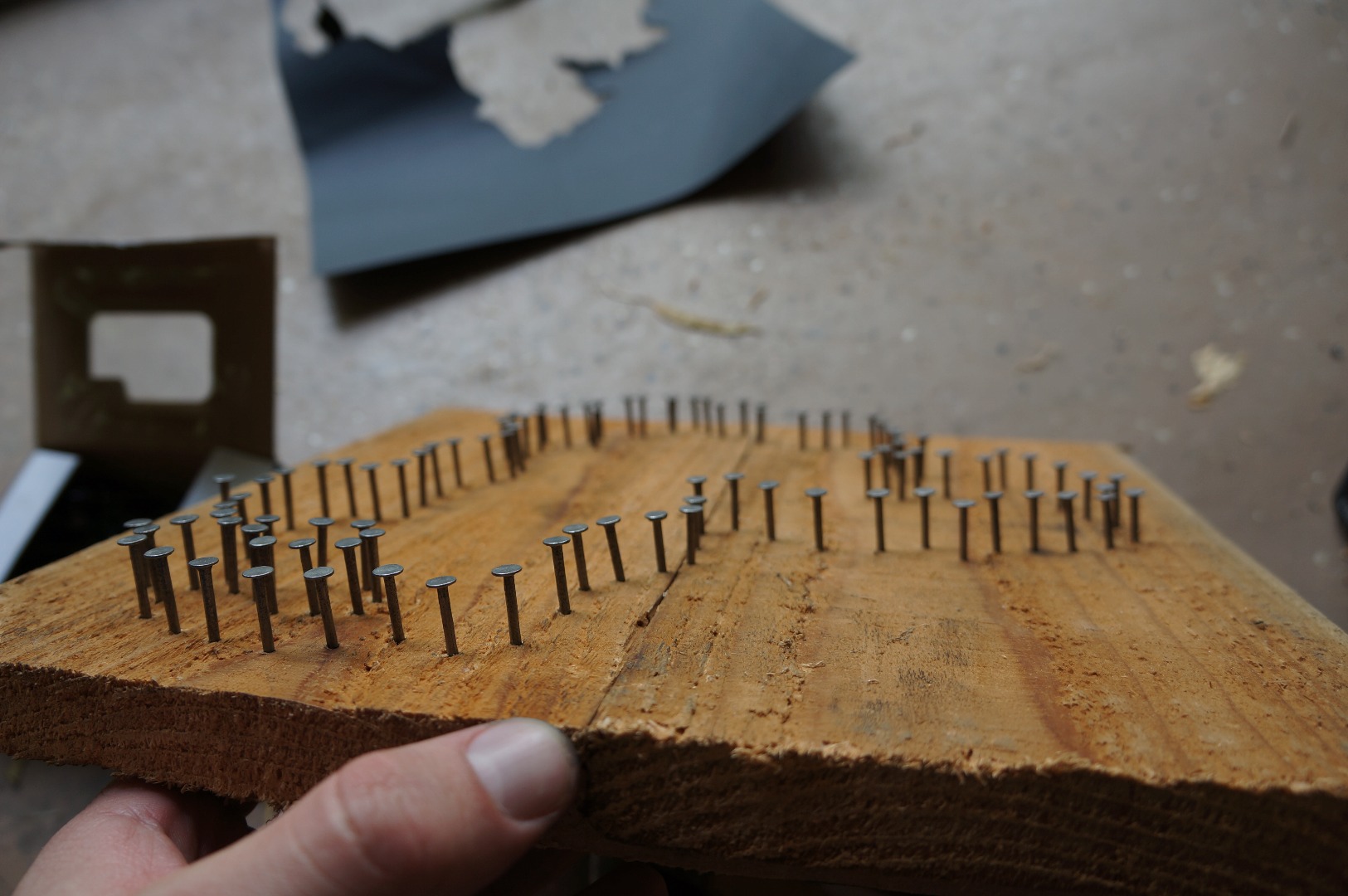
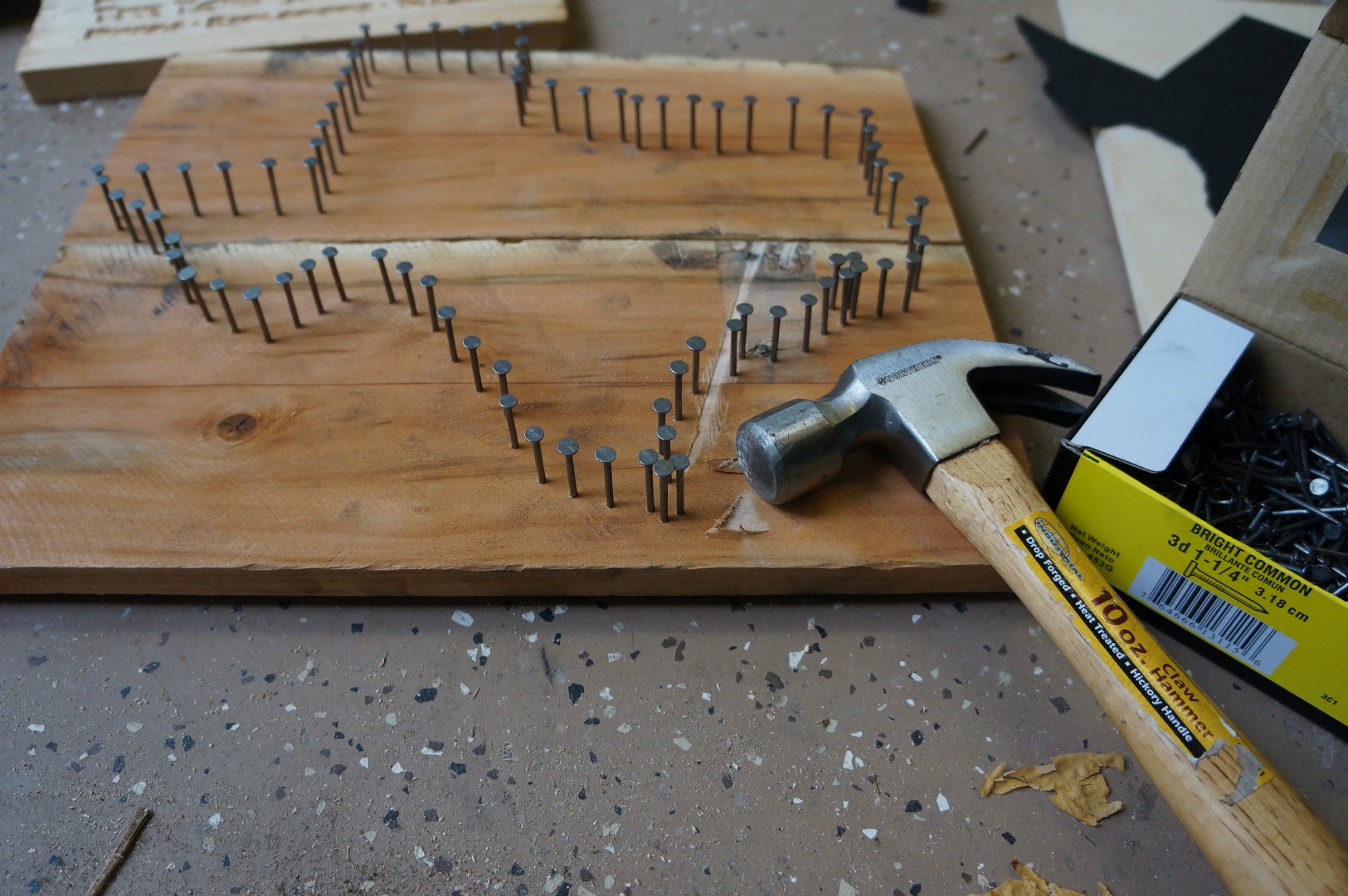
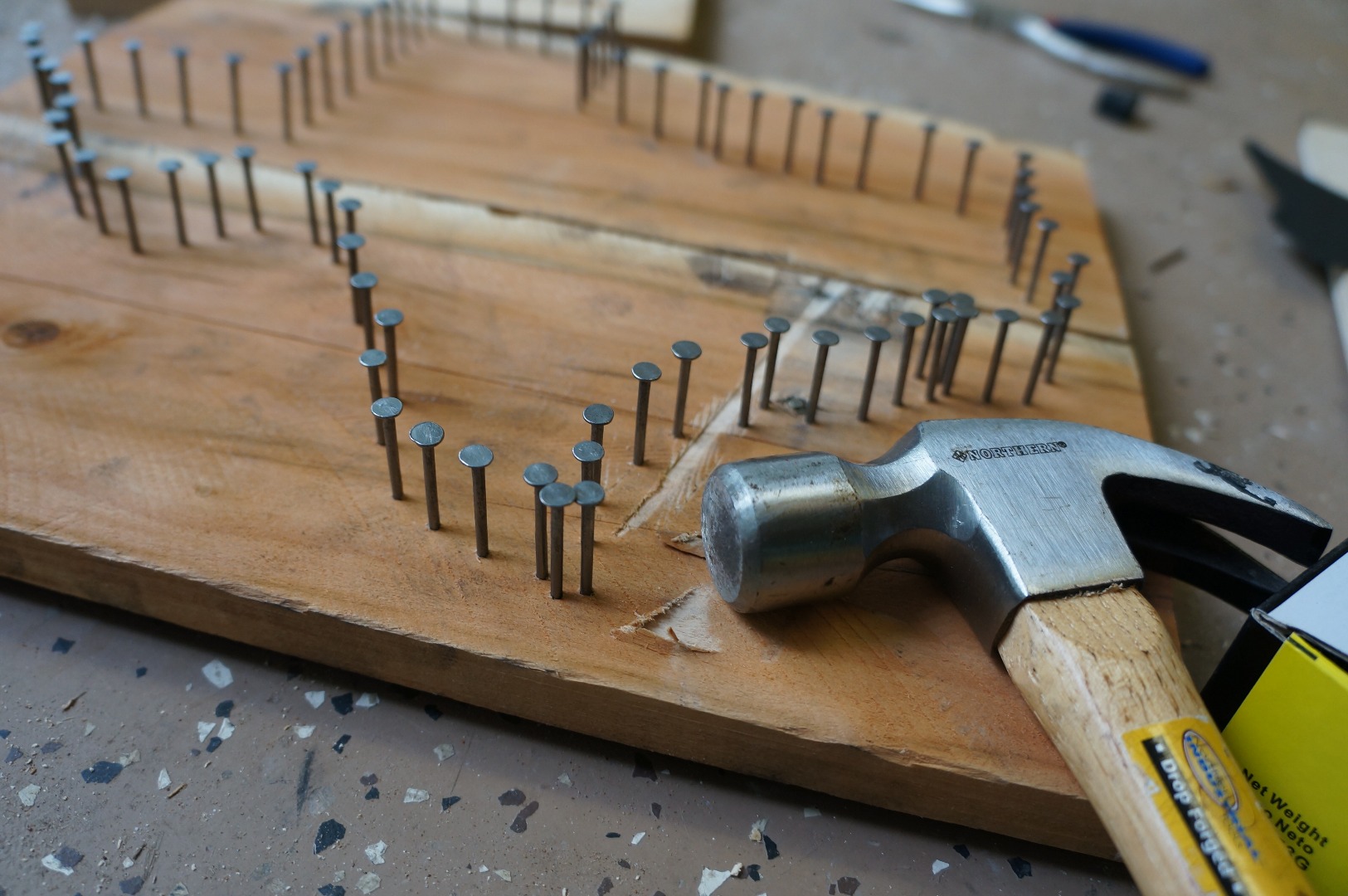
Using the hammer, begin driving your nails in the pilot holes. Sequentially work your way around the perimeter of the shape --- whether you move clockwise or counterclockwise does not matter. If there are any interior shapes be sure to nail them first. This approach should help ensure that you have open access to each nail, and aid in maintaining uniform vertical alignment of the nail heads.
As contradictory as it may seem, I try to be gentle with the hammer. With the aid of the pilot holes, the driving of the nails should be relatively easy. It becomes very apparent when you hit the bottom of the hole, and I try not to push it much beyond this point. I do this because:
- There is not going to be a huge load on the nails, maximizing their contact area with the board is unnecessary.
- Driven past the bottom of the hole, the exposed height of nails becomes much harder to adjust.
- If I was successful in drilling my pilot holes to a uniform depth then I want to use that to my advantage.
I say all this but, at the end of the day, your nails need to be secure. Just realize that you don't need to wear yourself out trying to pound them through your base.
Anchors Aweigh
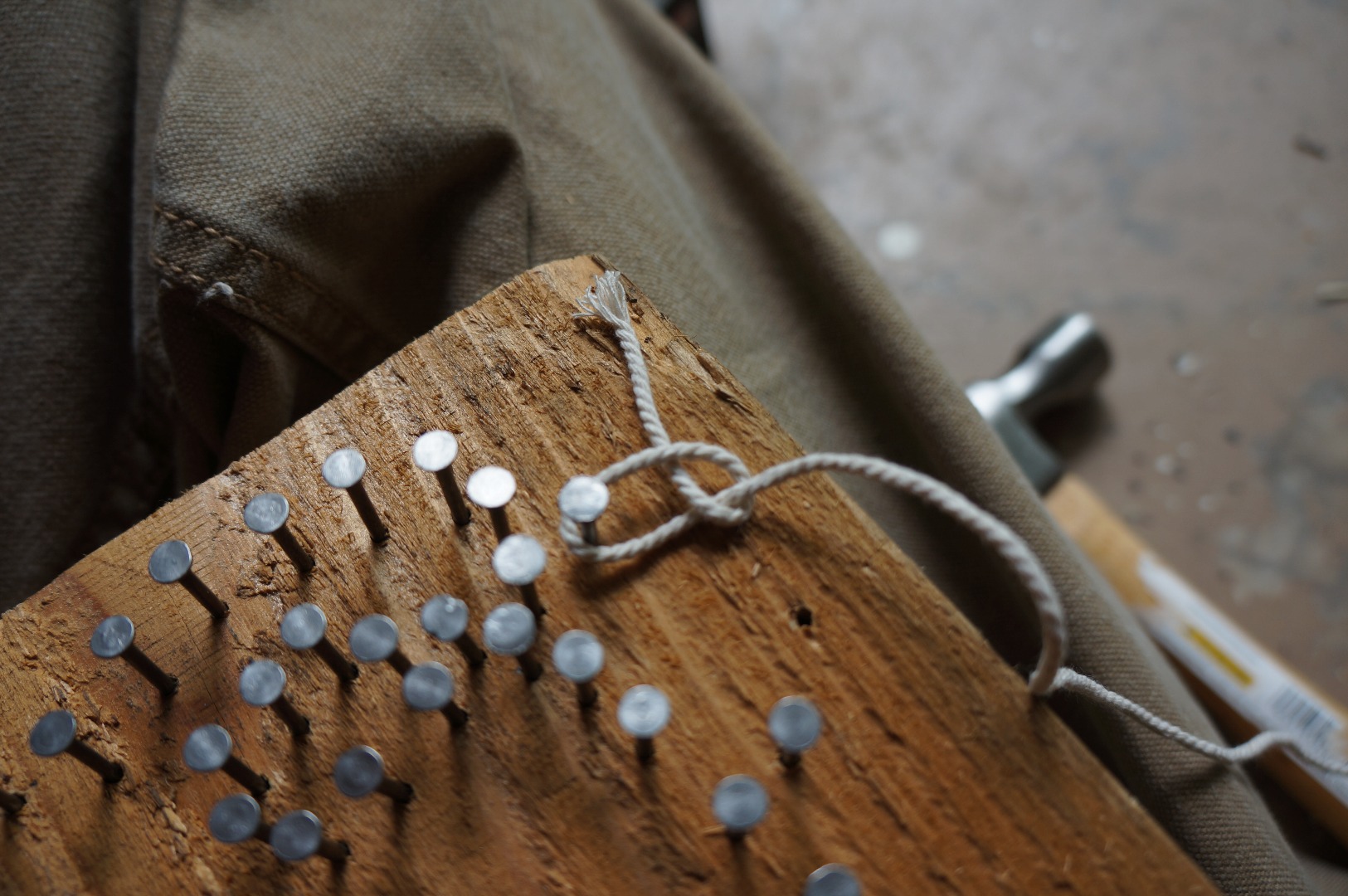
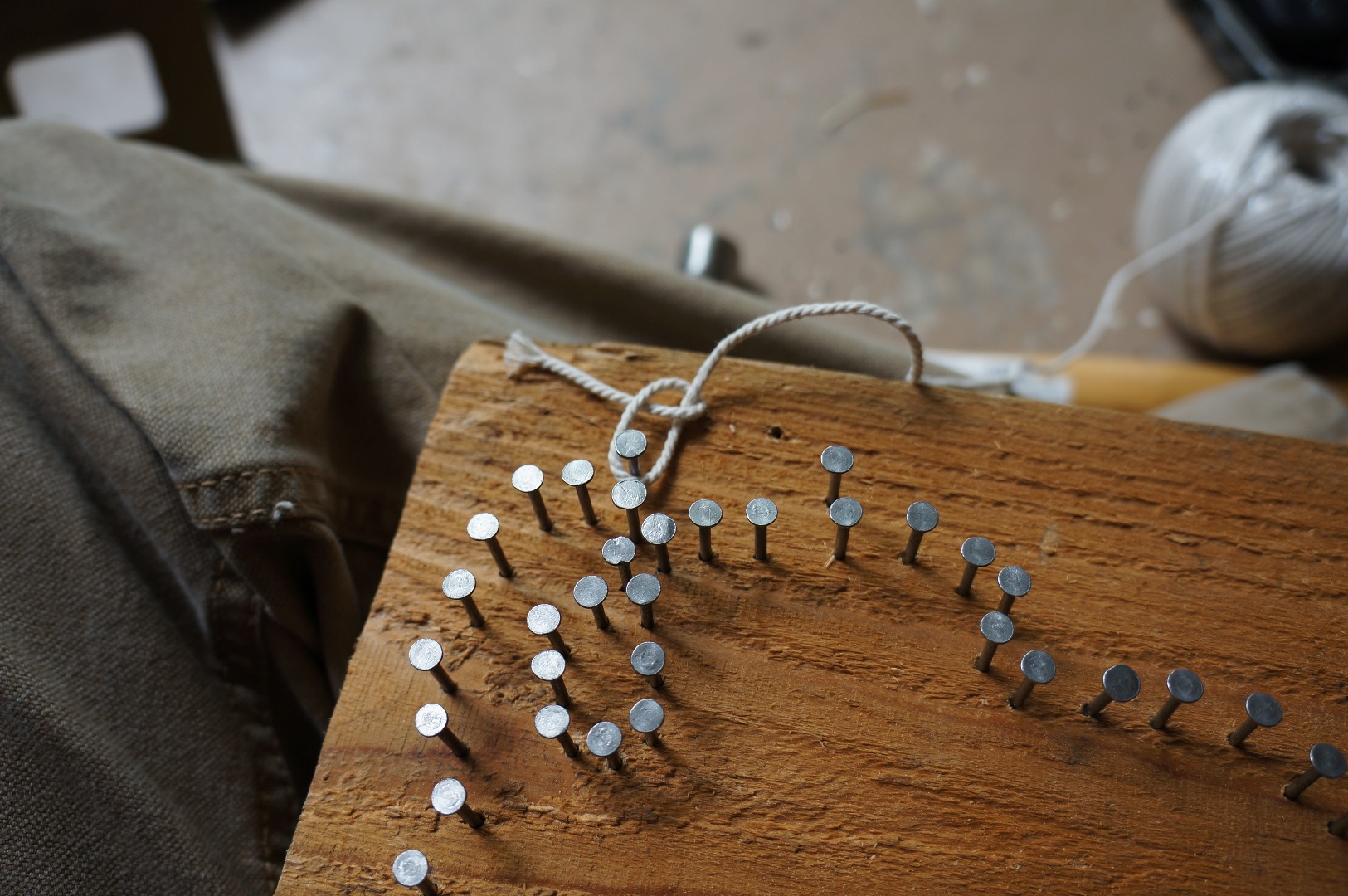
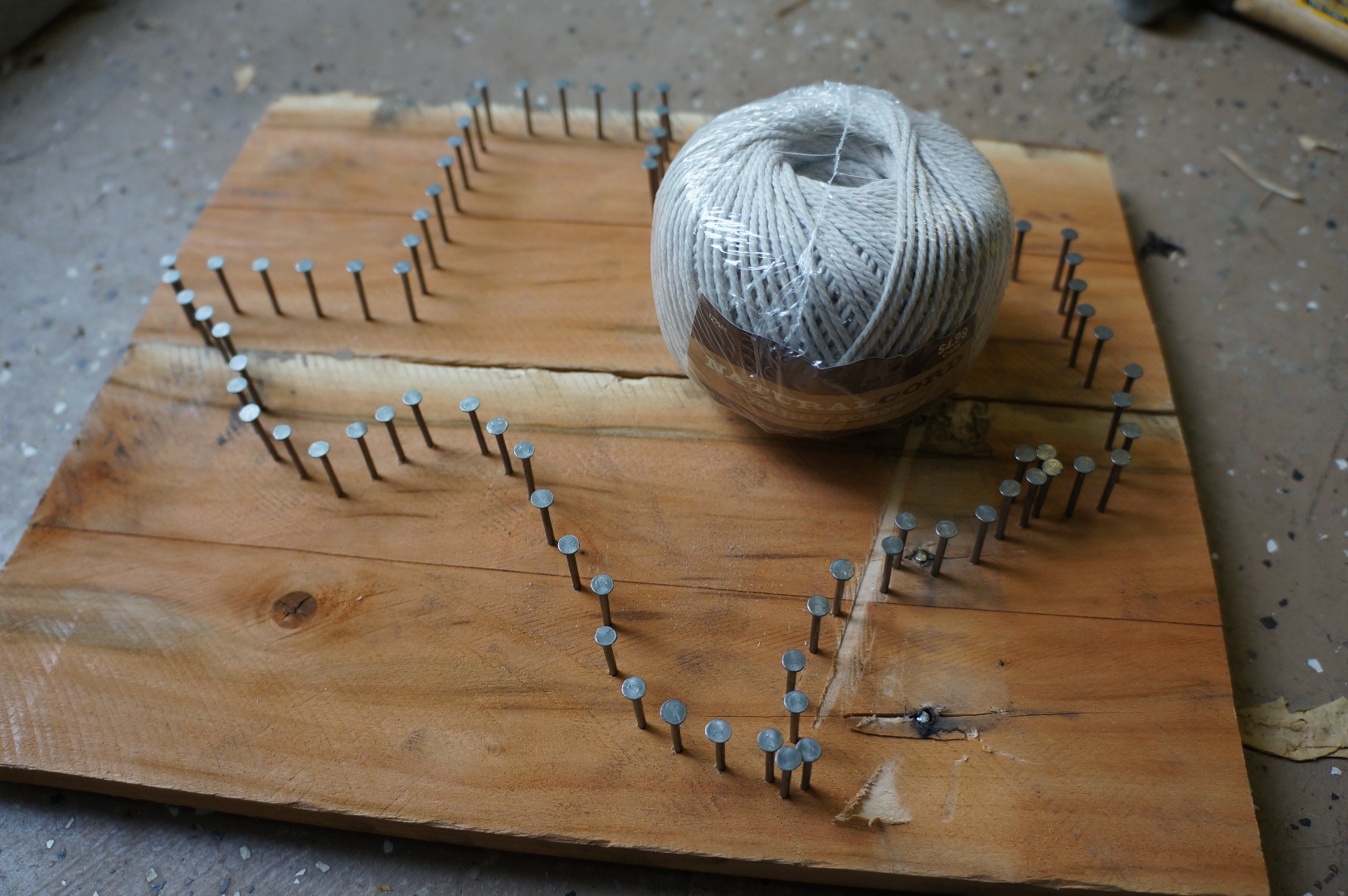
By now things have really started to take shape, literally. You are getting very close to the fun part!
First, you need to anchor in the end of your string so that you can keep it taut as you route it around all your nails. To do so I just tie a half hitch knot around one of the nails. Leave yourself about 4" of slack to help prevent it from coming undone. Make sure to cinch it down good and tight and pull on it a couple times to be sure it will hold. The load on the knot should decrease as soon as you start wrapping so don't get too carried away trying to tighten it up. In both of the pieces I made I was able to get by with tying only one knot. However, if you are uncertain of your half hitch knot, tie a second one for good measure.
Now the fun part...
All Strung Out
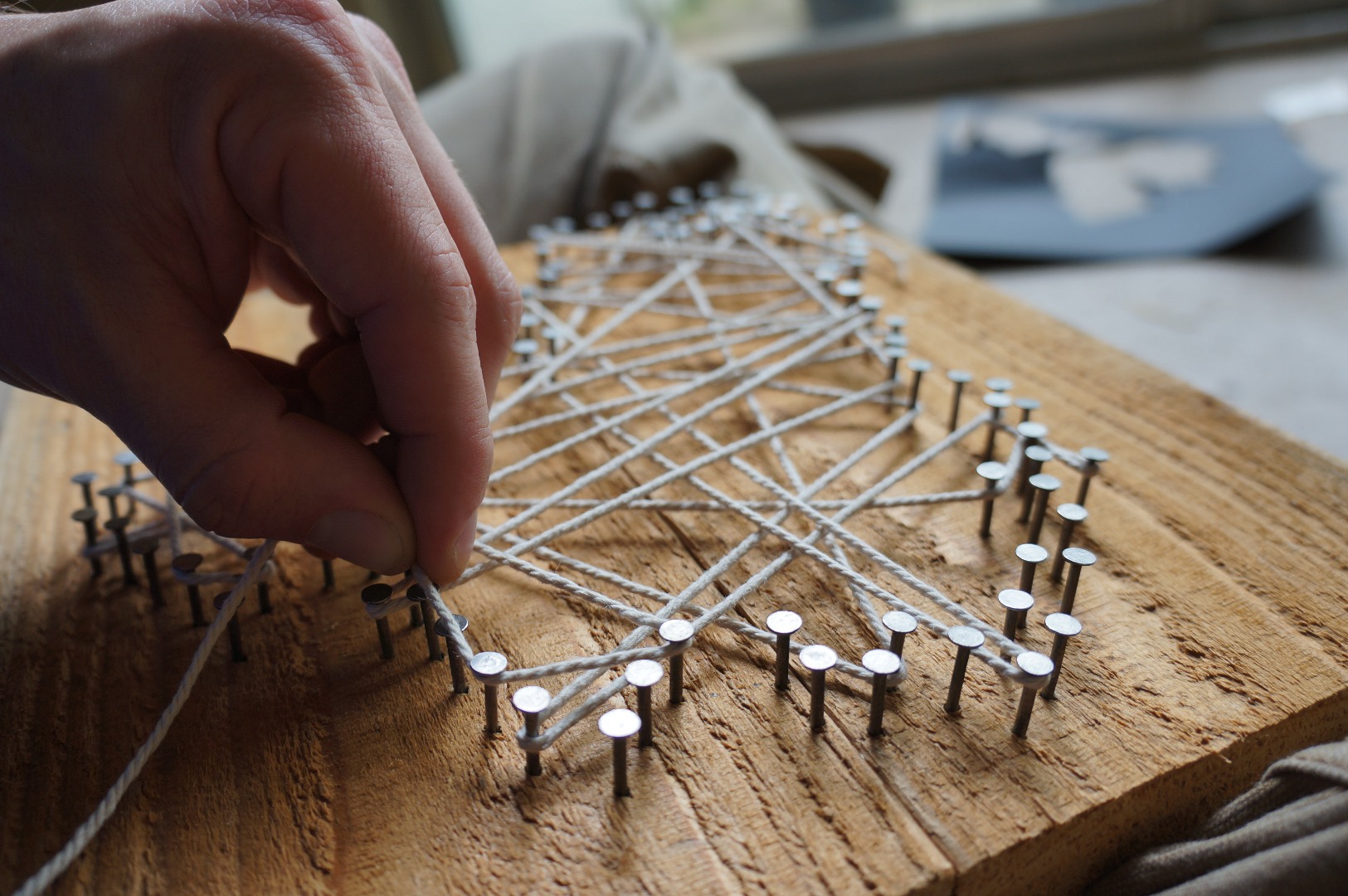
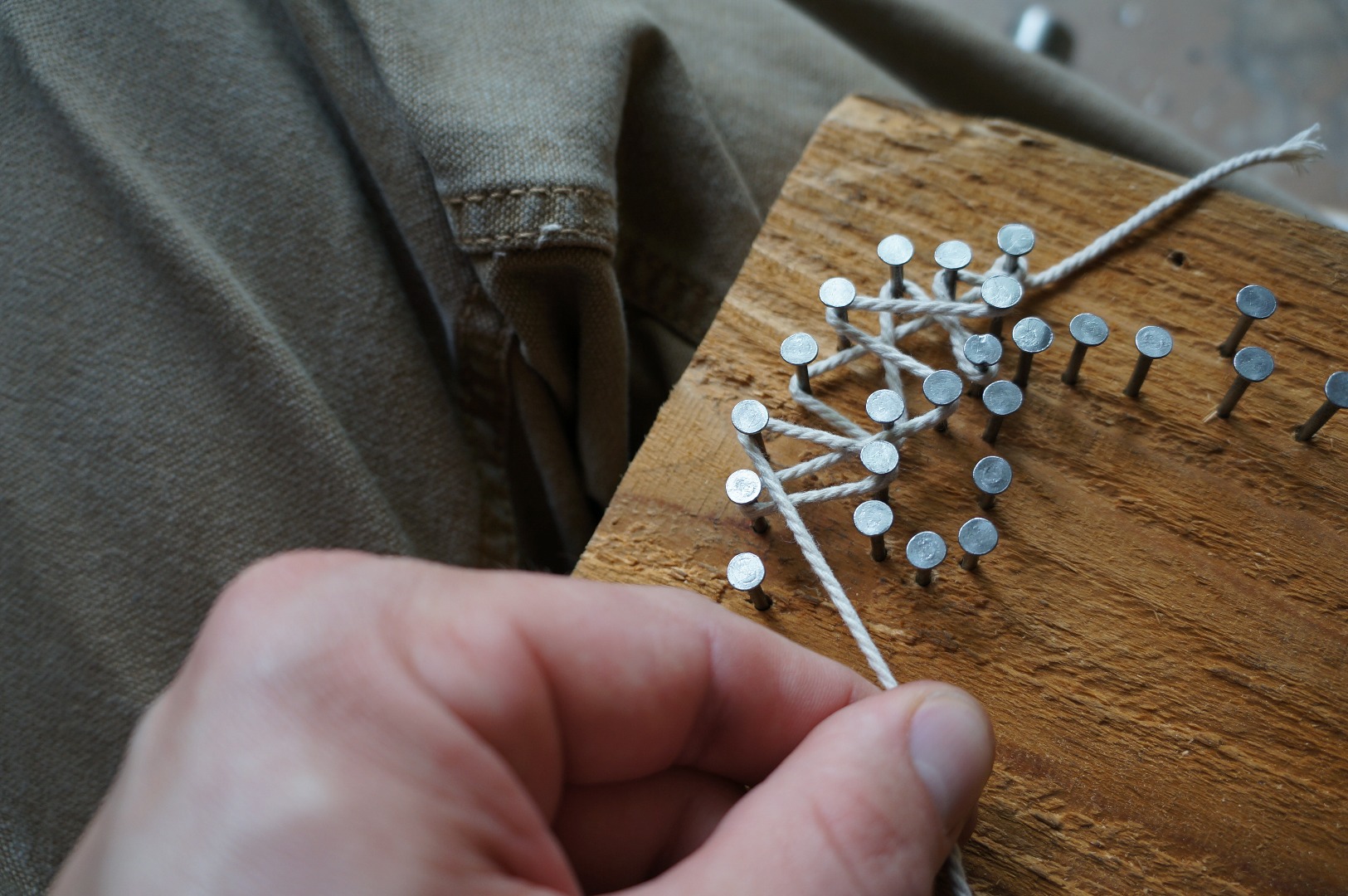
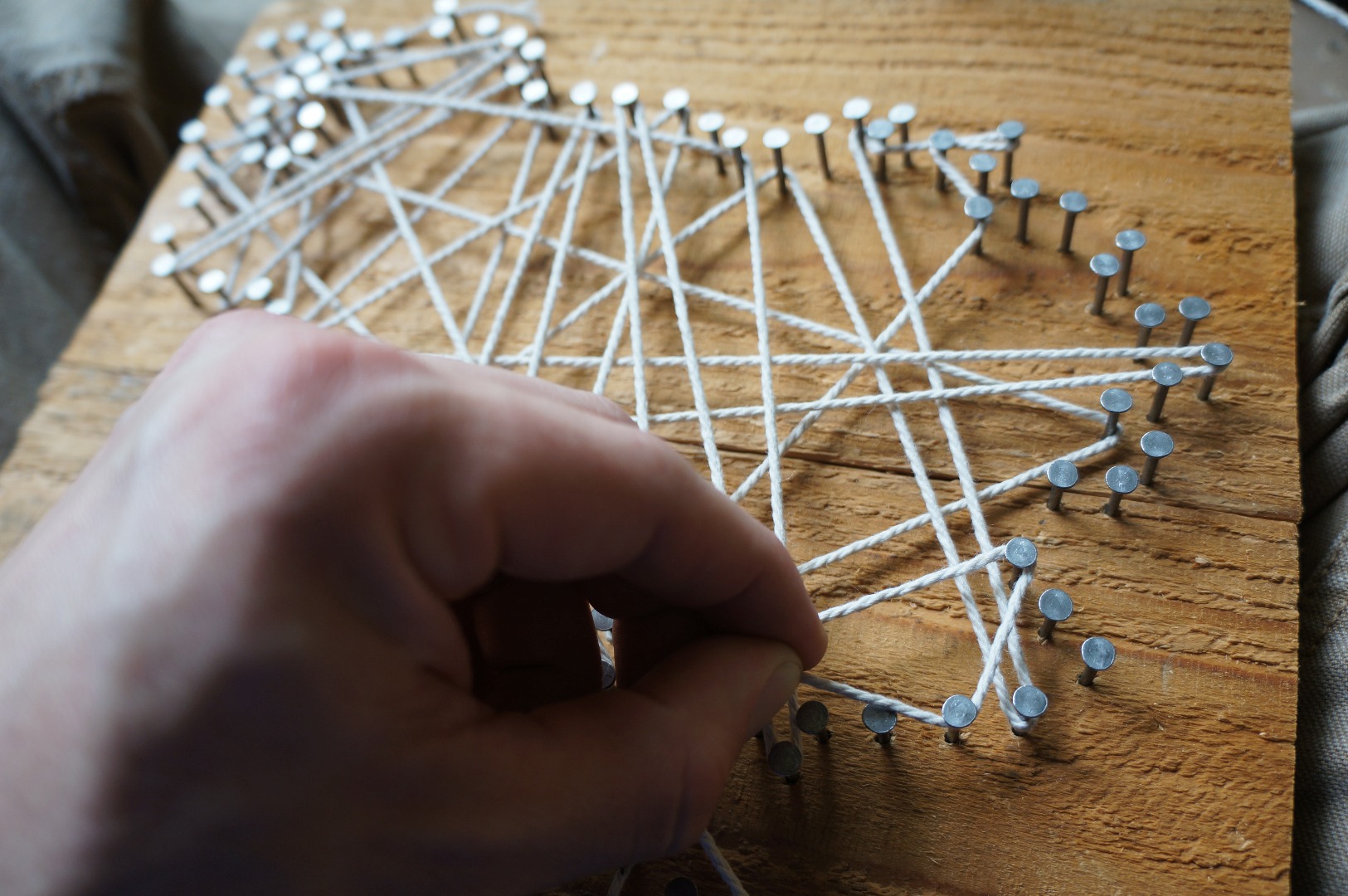
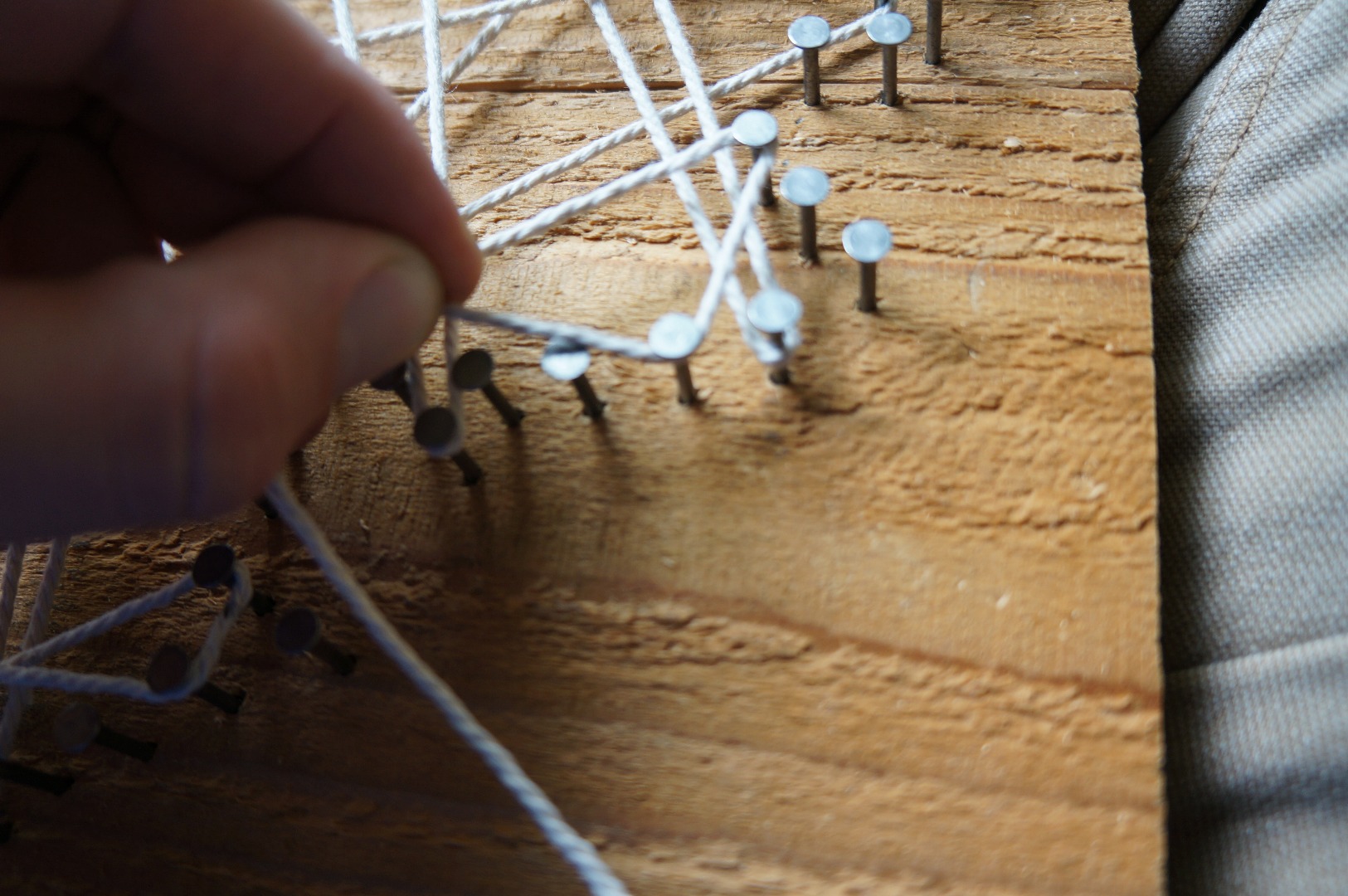

I have seen a lot of designs that are very meticulous in their stringing patterns. These are very impressive, but I prefer a randomized approach. I think it makes things notably easier and adds a more unique character to the piece.
With this being said, there is no order or method to stringing your piece. That's the fun part. I do, however, have several guidelines for producing a more visually pleasing result.
- Embrace the randomness! Avoid following the same path, or even a parallel path, as much as you can.
- Try to hit corners early on. Late in the game it can be challenging to work your way into one without covering something else up.
- Contact each nail at least once, but no more than twice. You could set a hard rule of one wrap per nail, but I found this difficult to adhere to. I think twice is the limit because beyond that your piece gets too busy for my taste.
- Avoid any twists (overlapping the string back over itself) when you contact a nail. This is another form opinion. I think the twists draw added attention to the point of contact with the nail. Without any twists, the head of the nail sufficiently hides the string below, making it the focal point along the border and better emphasizing the overlapping strings in the interior of the shape.
- Keep tension the string as you go. It will result in straighter, cleaner lines. It will also keep things from falling apart.
- Be cognizant of, but don't worry about depth (layers of strings) at this point. It is an important part of your piece and we will adjust it later.
- Evenly spread the strings as best you can. If you see a low density area, make your best attempt to make your next pass over it. Conversely, avoid a huge buildup in areas by reducing passes into them.
If at any time you feel that the stringing is not going how you planned then just stop and try again. Practice makes perfect and a few mistakes the first time will help you know what type of situations to avoid later on!
End of Your Rope
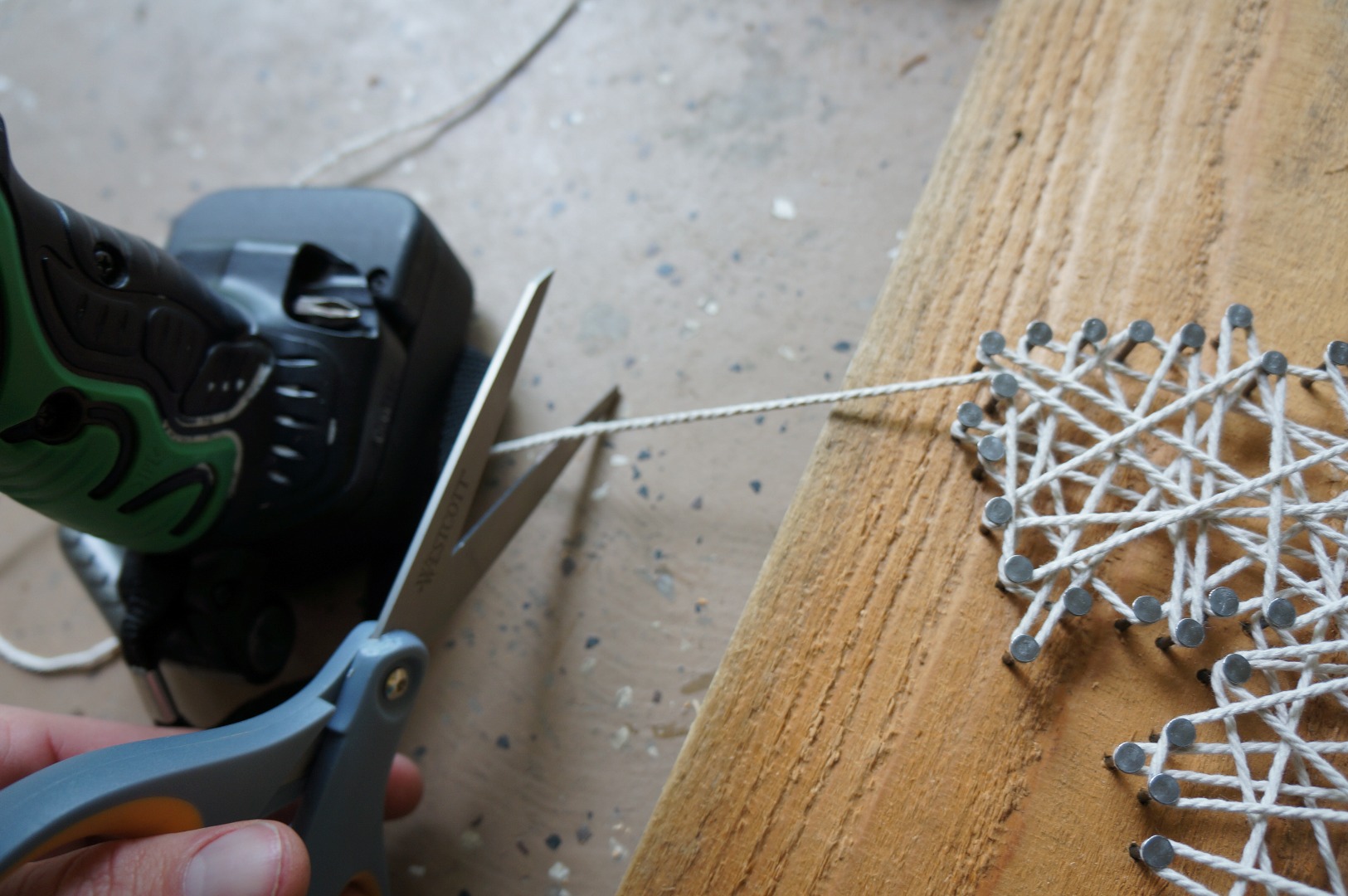
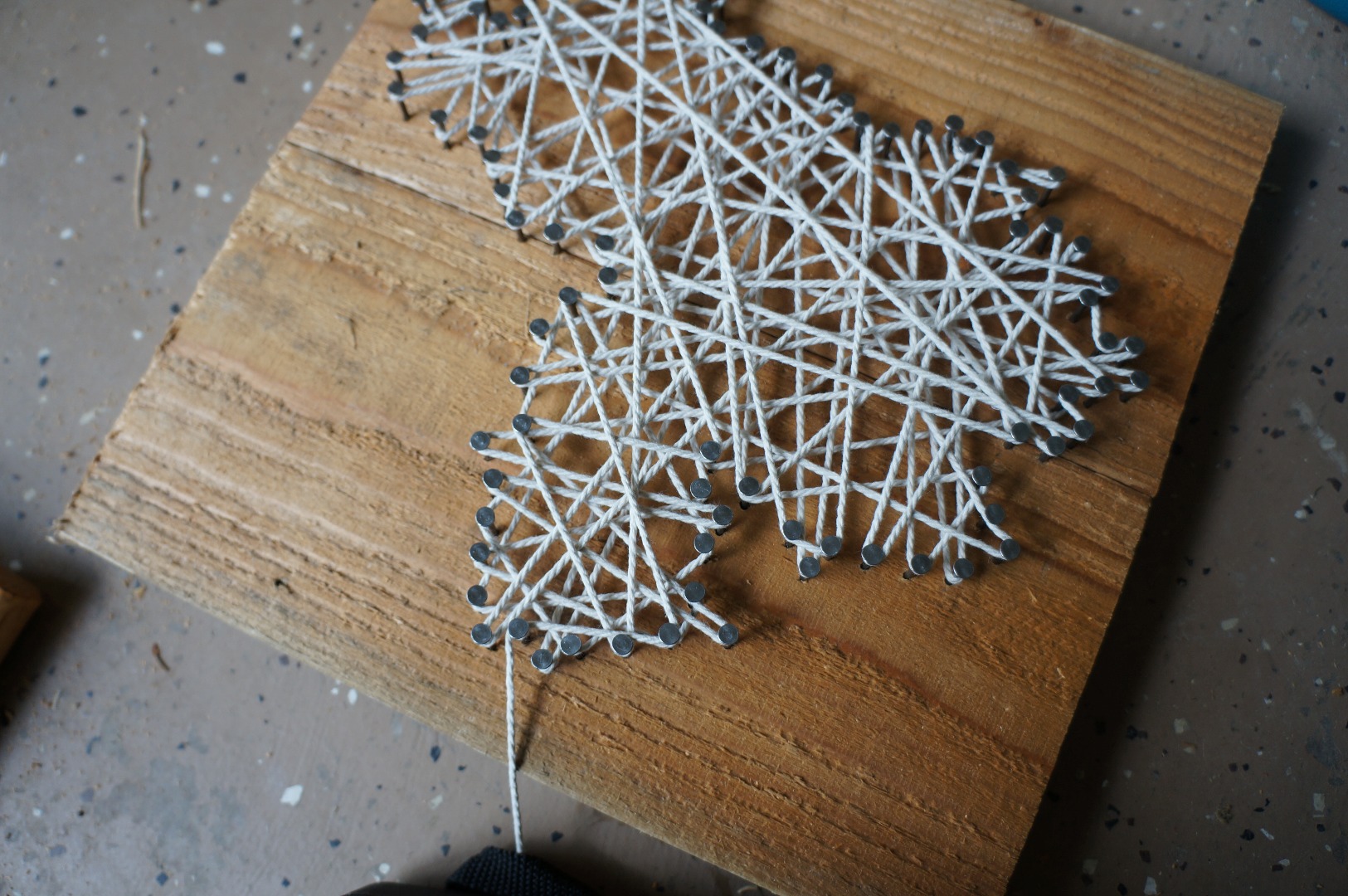
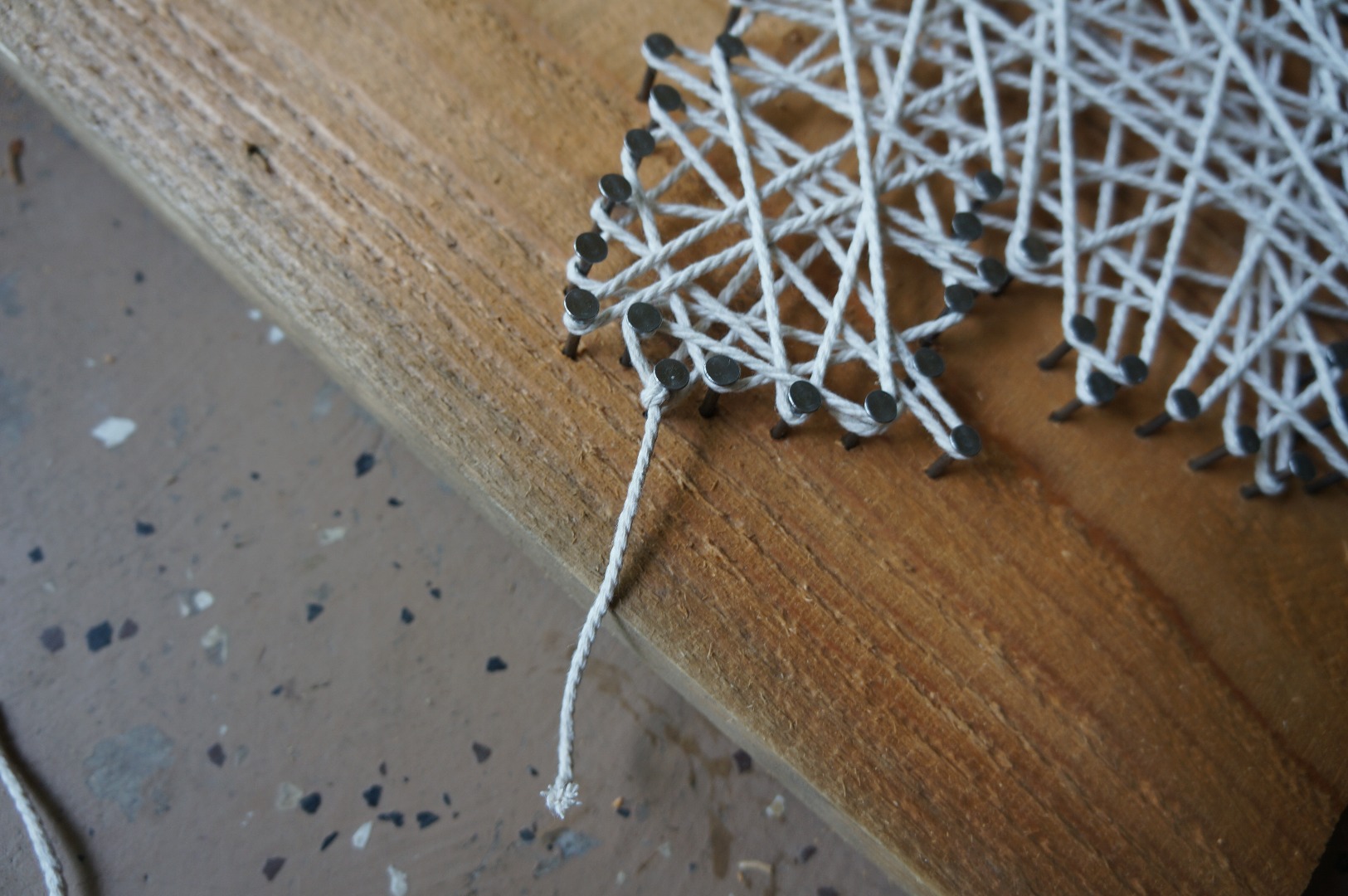
Once you've hit every nail once or twice it's time to shut it down. Any nail will do, but I prefer a point or corner that provides easy access.
Keeping tension in the string, cut it off about 4" beyond the last nail. This will give you plenty of slack. Tie another half-hitch knot, getting it as tight as you can against the nail. Once again, I was able to get by using only one knot. Depending on your string you may need to tie a second one.
Lockdown
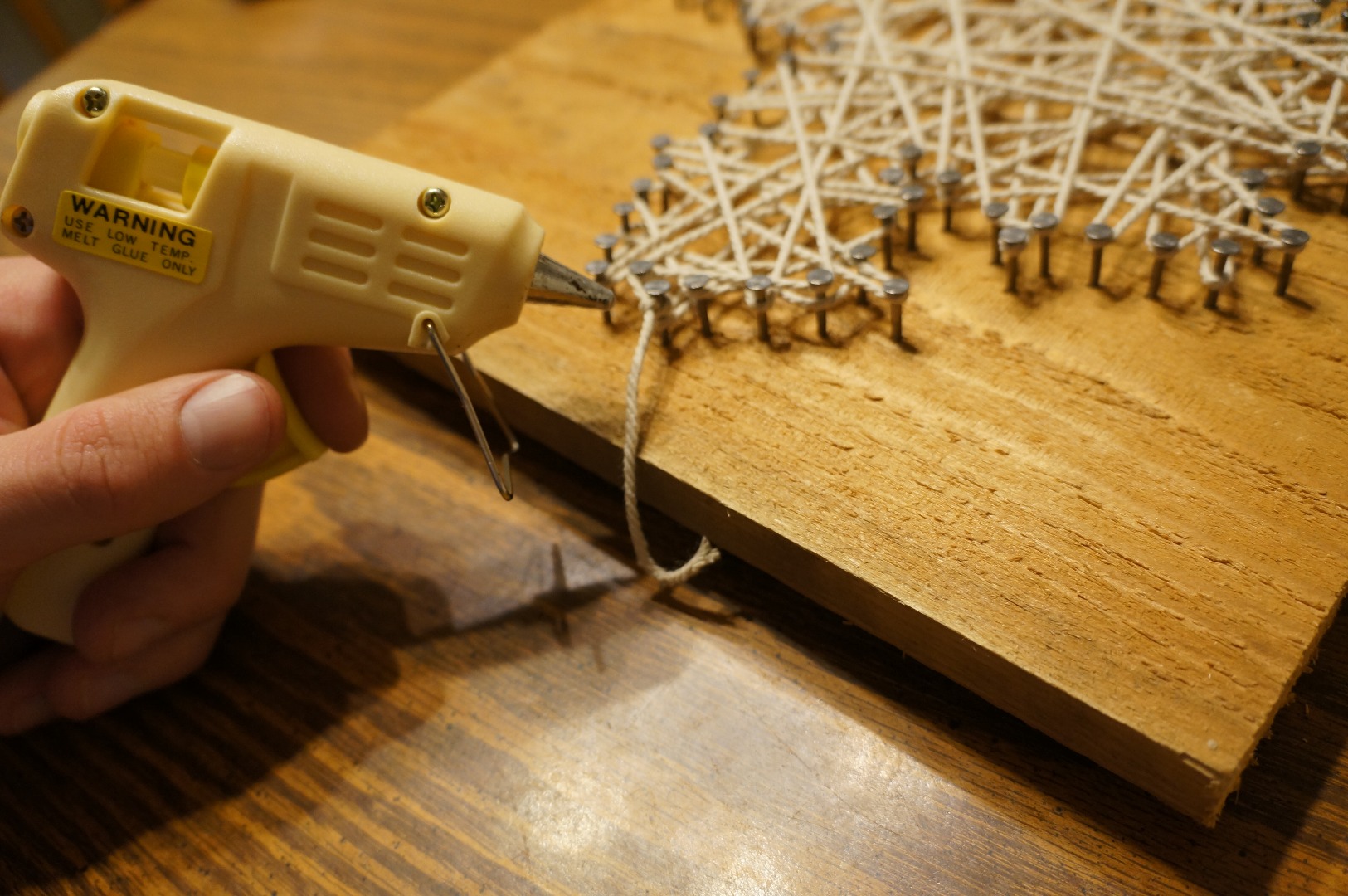
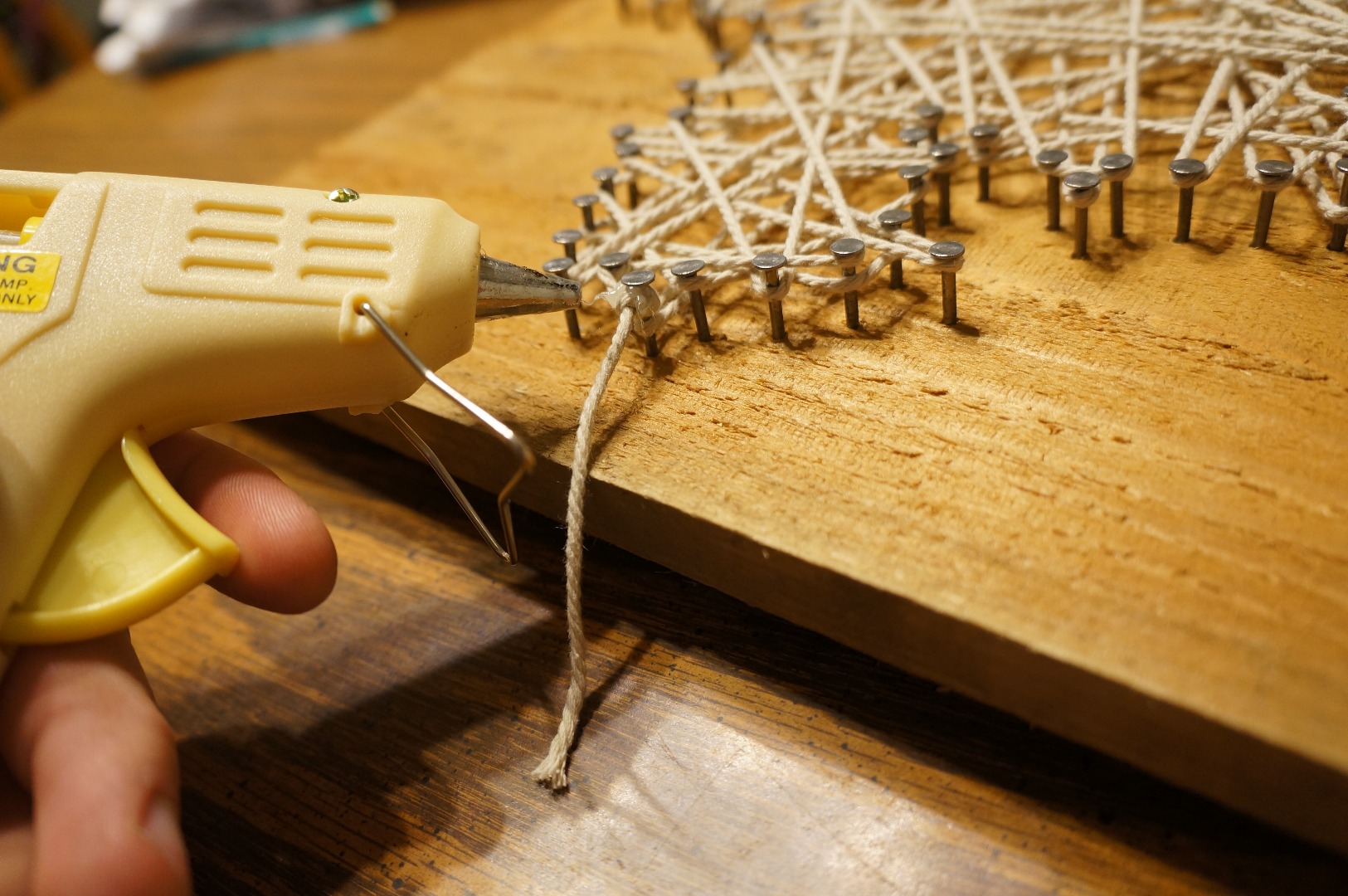
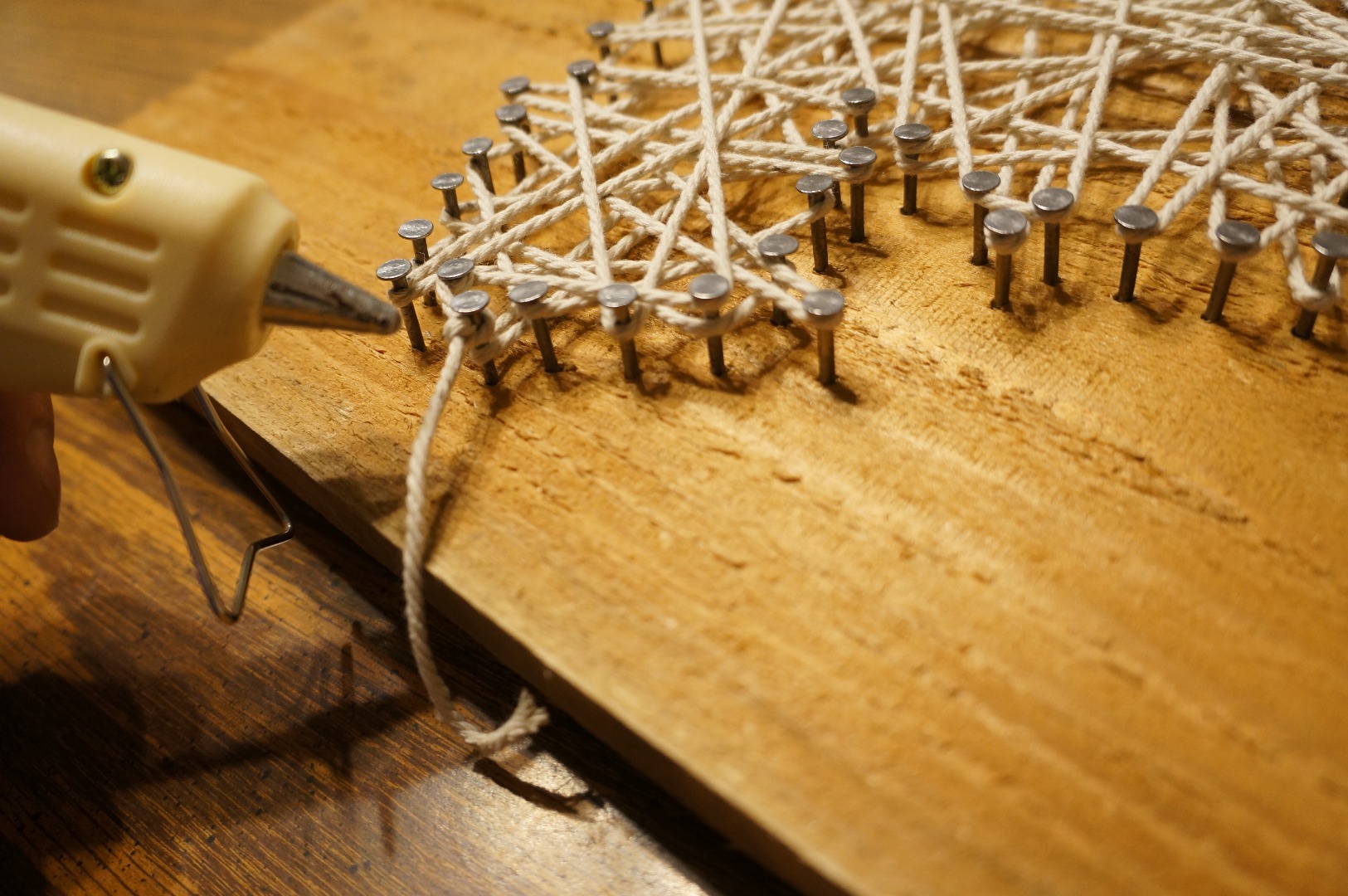
You've worked really hard to dial in your string pattern, so we want to be sure that it's there to stay.
Plug in your hot glue gun and get it warmed up and ready to go. Once it is hot, apply a thin layer the point where the string wraps around the nail, securing the two together. Try to avoid a huge glob so it stays concealed beneath the head of the nail.
Once your hot glue has had a minute to set, take your scissors and cut off the 4" of slack at the knot. Get as reasonably close to the knot as you can. Now, grab your hot glue gun again and use a dab of glue to seal the end of the cut string. This cotton string is wound, so by sealing the ends we can help prevent it from unraveling.
Repeat this for both ends of the string.
Depth Charge
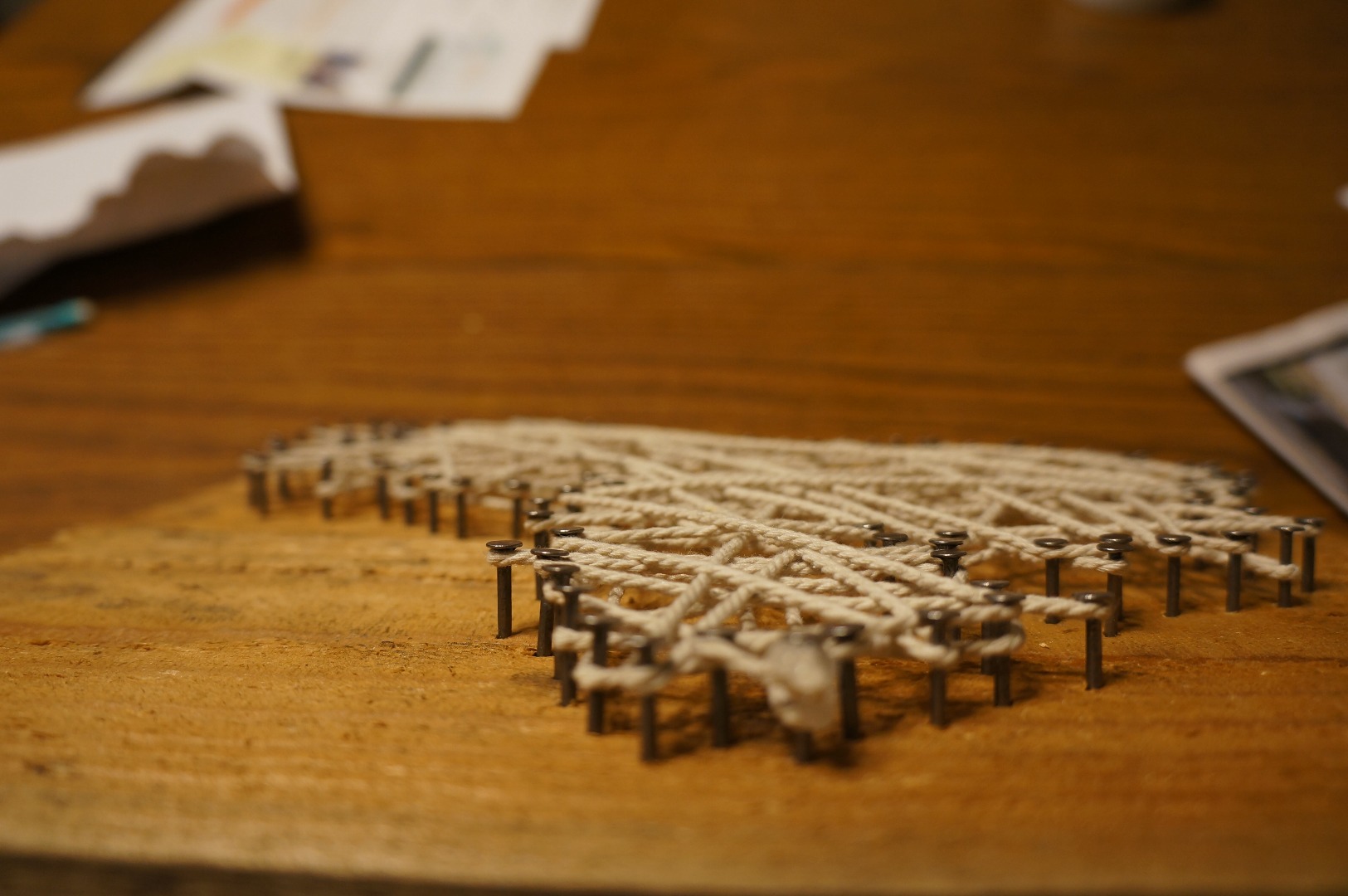
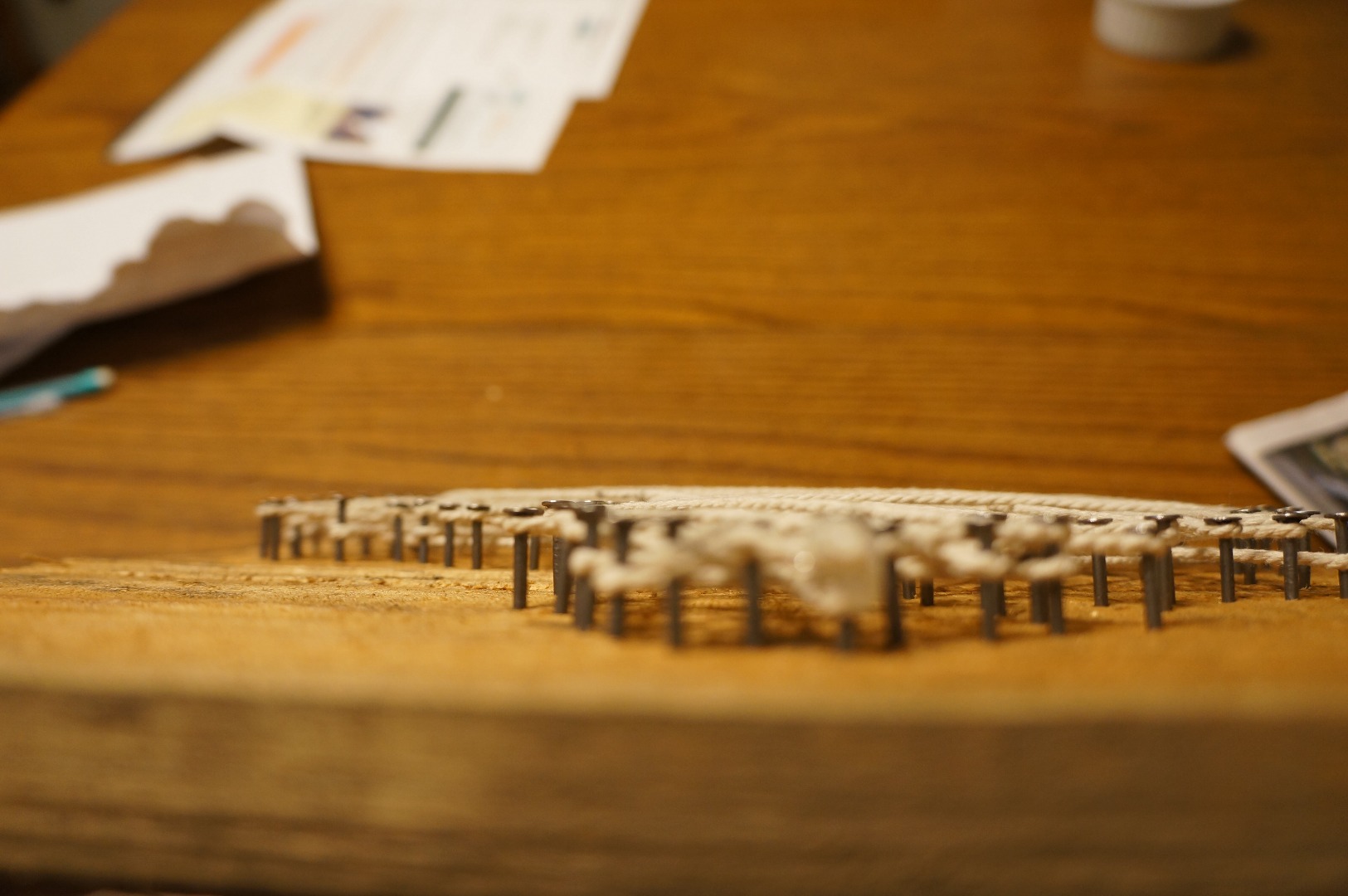
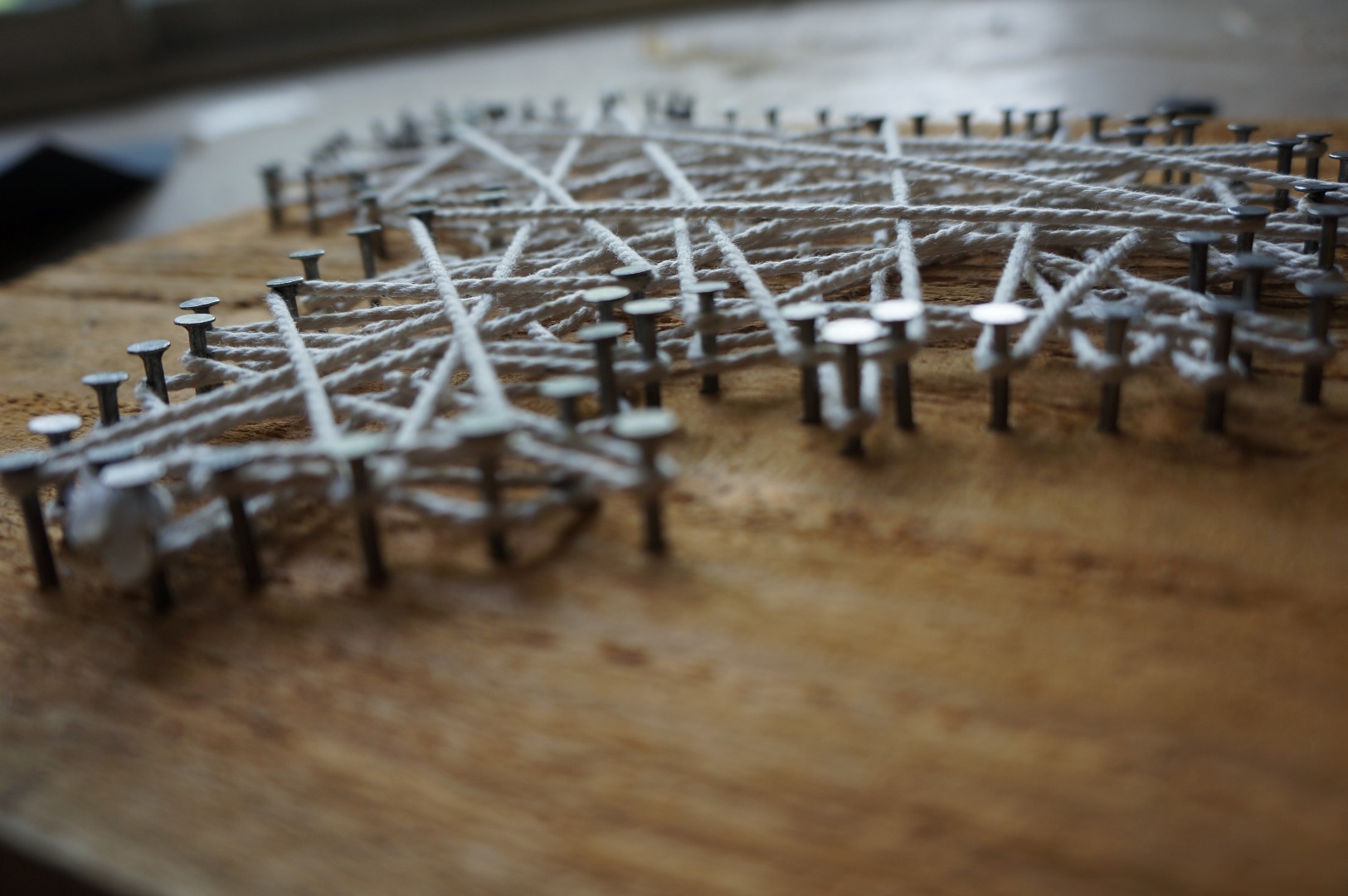
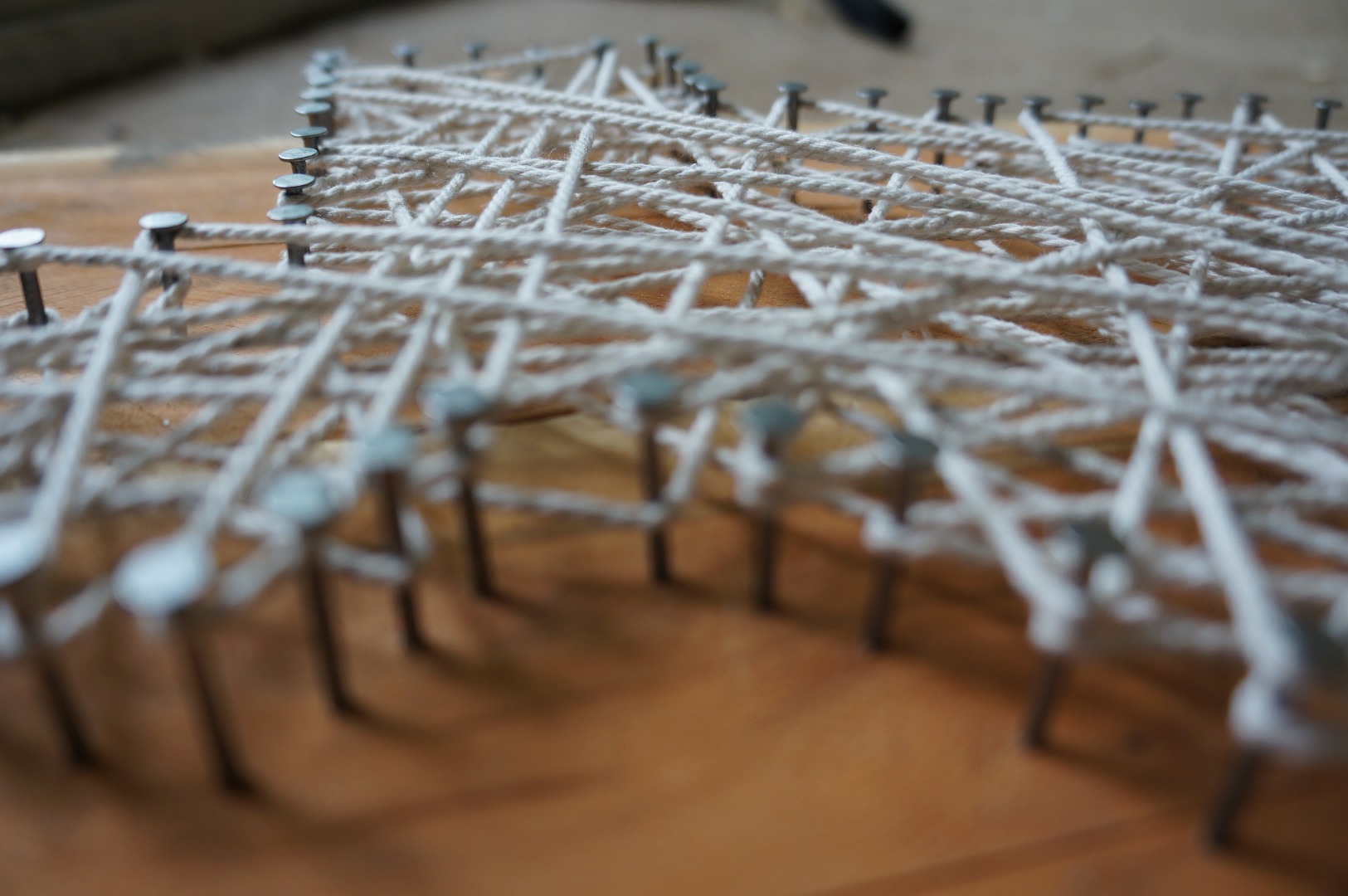
Earlier I told you not to worry about depth. Well, the time has arrived.
Inevitably, as you create layer upon layer of string, they will start to stack up. Looking at the piece from the side you may detect a slight bulge. There is really nothing wrong with this, but I like the added dimension that multi-layered strings provide and for everything to remain below the nail heads.
Adding depth is as simple as pushing each wrap of string up/down the nail. You may need a pen or small screwdriver to help you do so. As you begin moving strands down you will be able to see which other strings are pushing against them. Keep working them up and down until you have removed these pressure points or until you are satisfied with the look.
On Display
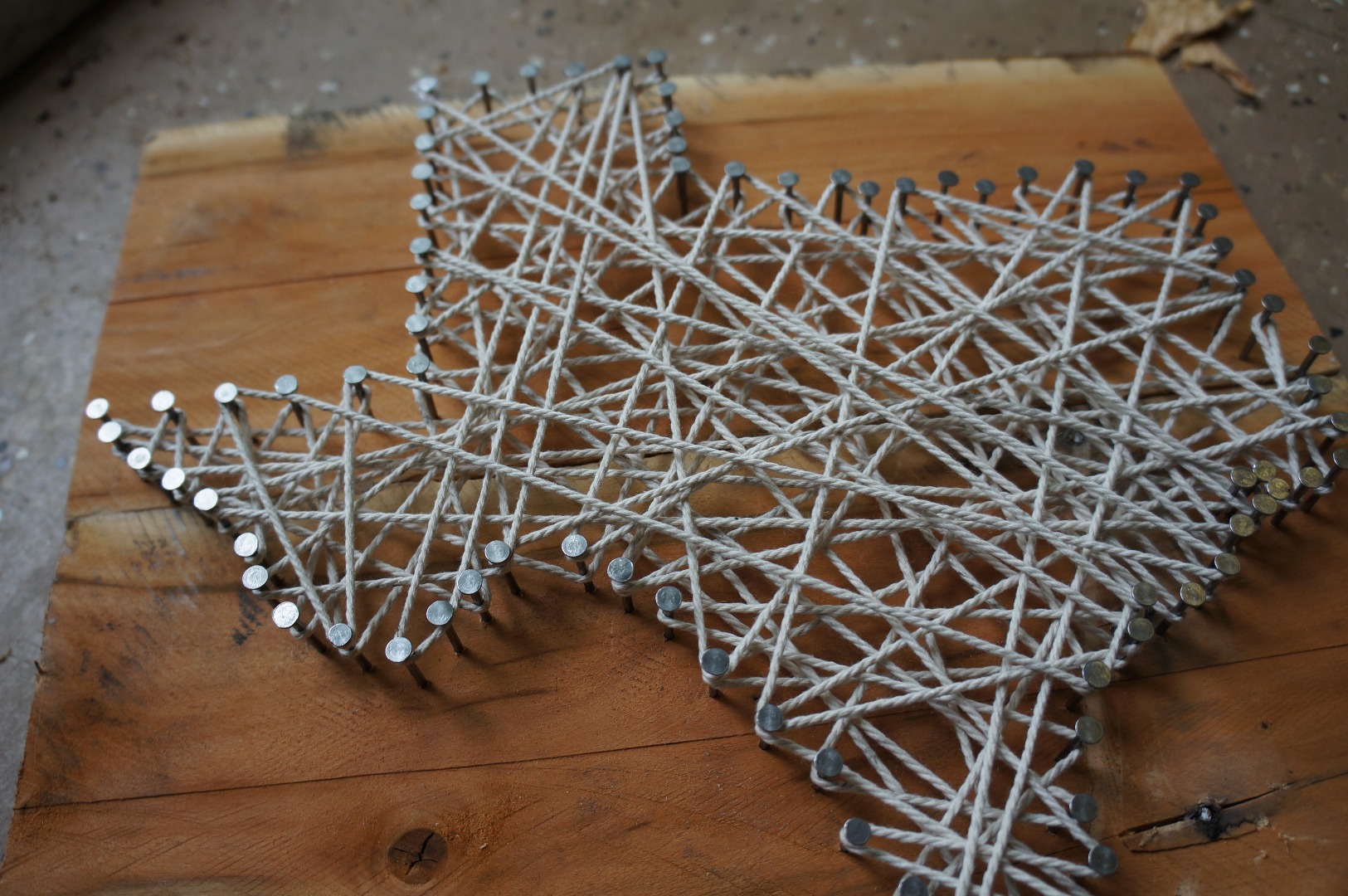
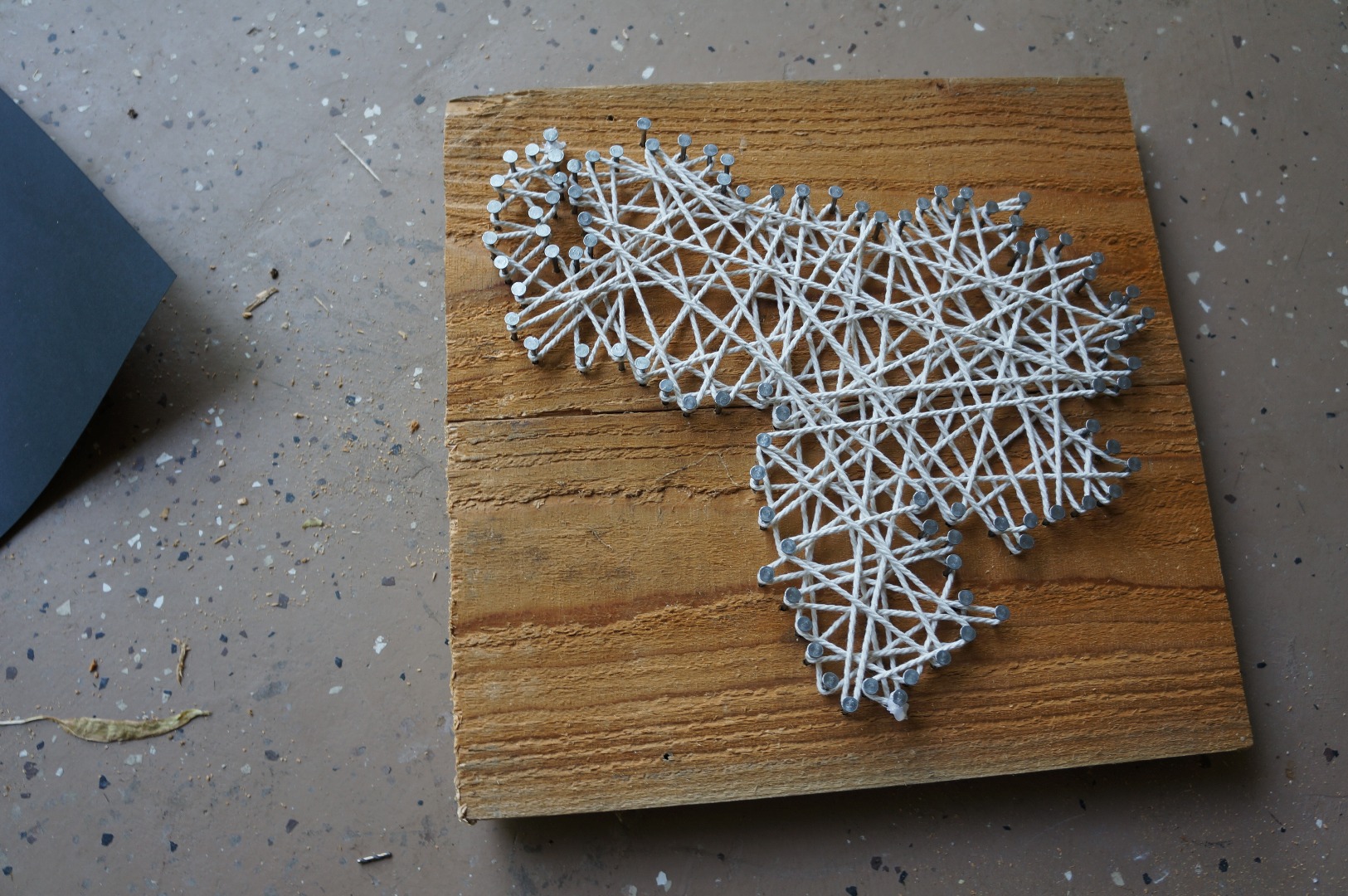
And that's it! Now go share your creation with the world!
It's up to you what to do with it next. I am thinking about adding some hangers on the back and mounting these on the wall.
Final Thoughts
I hope you have enjoyed this Instructable. I had a lot of fun putting both of these together and am looking forward to giving them to a couple friends.
This was my first attempt at string art and I learned a lot in the process. Some things I would like to improve upon or try next time are:
- Find a better way to secure the ends than hot glue - the glue globbed up a bit more than I care for
- Take it easy on the small diameter bits
- Attempt an interior shape - Putting the lone star back in the Lone Star State!
- Make >2 wraps per nail with a smaller diameter string
- Add some color
Project MVP Award goes to the Cricut I used to make the stencils. Thankfully a friend of mine had one and was gracious enough to show me the ropes. These things really are awesome and I can't wait to attempt some more projects using them.
If you have any other suggestions or advice I would love to hear it in the comments. I would also really enjoy seeing any pictures of anything you create using this guide.
Thanks again for reading. Now go make some string art!